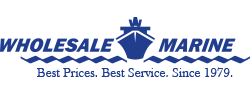

Open to the Public!

- Anchor & Dock
Anchor Windlasses

Horizontal Windlasses

Vertical Windlasses

Anchor Rodes

Switches & Solenoids

Maxwell Covered Foot Switch
Maxwell Marine Covered Foot Switch Maxwell heavy-duty, weather resistant units have a UV stabilized water proof diaphragm and are supplied complete with mounting instructions and screws. Rated at 200 amps and suitable for 12V or 24V applications...
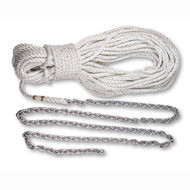
Lewmar Premium 3-Strand Anchor Rodes
Lewmar Premium 3-Strand Anchor Rodes - Marine Grade with Rope & Galvanized Chain Lewmar anchor rodes are a great economical choice for boaters looking for a windlass rode. These rodes are designed to work with the rope-chain gypsies fitted to all...
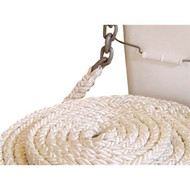
Lewmar 8 Plait Anchor Rode
Lewmar Anchor Line 8 Plait Lewmar Anchor Rodes feature 8 plait nylon line joined with a tapered splice to ACCO Hi-Test hot-dipped galvanized chain. Each anchor rode comes with a shackle to attach the chain to the anchor. Anchor rodes complement rope...

Sea Dog 316 Stainless Anchor Swivel
Sea-Dog Stainless Steel Anchor Swivels Sea Dog investment cast AISI 316 stainless steel swivel anchor connectors are designed to easily slide of anchor rollers, preventing snagging which minimizes wear on the bow roller and windlass. These precision,...

White Deck Foot Switch
Lewmar White Deck Foot Switch Lewmar deck foot switches are single direction switches and come ready to install. With a hinged cover to prevent accidental operation, they are suitable for DC electric windlasses running on 12 or 24 volts and must be used...

Lewmar V700 Vertical Windlass w/ Solenoid & Rocker Switch
Lewmar V700 Vertical Windlass w/ Solenoid & Switch With its 100% 316 stainless steel housing and a sleek flush-mount design that conceals the motor, the economical Lewmar V700 Vertical Windlass is one of the most attractive and durable components...
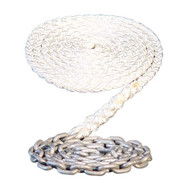
Maxwell 8-Plait Nylon Anchor Rode
Maxwell Marine 8-Plait Nylon Anchor Rode 8-Plait Nylon Anchor Rode for Anchor Windlasses. Maxwell Marine 8-Plait Nylon Anchor Rode

Sea Dog Windlass Foot Switch
FOOT SWITCH- Stamped 304 Stainless/Rubber Cover. Switch is normally off with momentary on when deppressed by foot. 30 Amps

Maxwell SP5104 Reversing Solenoid
Maxwell Marine SP5104 Reversing Solenoid 12V DUAL DIRECTION SOLENOID Used in conjunction with remote up/down panel, Auto Anchor™ 500C/RC, roving hand held remote control and/or foot switches to switch the motor in the required direction...

Maxwell Emergency Crank Handle F/RC & Freedom Series
Maxwell Marine Emergency Crank Handle F/RC & Freedom Series For use with RC8, RC10 Series anchor winches. Two sizes are available to suit the constraints of most foredeck configurations. Constructed of light weight, durable injection-moulded...
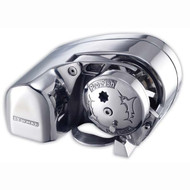
Lewmar Pro-Fish 1000 Windlass
Lewmar Pro-Fish 1000 Windlass The NEW Freefall Horizontal Windlass is the ultimate windlass for fishermen. The horizontal Pro-Fish has an automatic freefall that allows you to pull right up over a wreck or ledge, and drop anchor with speed and precision...

TRAC Anchor Rode
TRAC Anchor Rode TRAC Anchor Rode is a strong yet cost-effective rope and chain combination designed to work with all TRAC brand and other drum winches or windlasses. This rope and chain combination is made of premium windlass-grade double braided nylon...
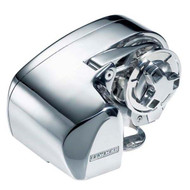
Lewmar Pro-Series 700 Horizontal Windlass Kit w/ Switch & Solenoid
Lewmar Pro-Series 700 Horizontal Windlass Kit w/ Switch & Solenoid Praised by professionals worldwide, the horizontal Pro-Series is a shining example of Lewmars commitment to provide quality products for boats from 6m-11.5m (20-38ft). Its DIY-ready,...
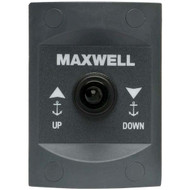
Maxwell Up/Down Anchor Switch
Maxwell Marine Up/Down Anchor Switch Easy to use panel-mounted Up/Down switch for remote windlass operation from the helm, flying bridge or cockpit. Available for use with dual-directional solenoids. Manufactured from marine-grade materials. Splash...

Lewmar Pro-Sport 550 Windlass
Lewmar Pro-Sport 550 Windlass Lewmar's Pro-Sport rope/chain windlass is designed as an economical package for rope and chain applications, without compromise to quality or performance. Pro-Sport is designed around a highly efficient spur gearbox, using...

Lewmar Guarded Rocker Switch
Lewmar Guarded Rocker Switch Lewmar's Guarded Rocker Switch controls the up and down function of all Lewmar anchor windlass models. The switch can be mounted at the helm as the main switch for operation, or mounted at a second station as a secondary...
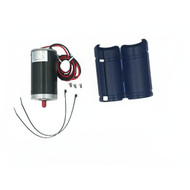
Lewmar V700 Windlass Replacement Motor Kit
Lewmar V700 Windlass Replacement Motor Kit This is a genuine Lewmar OEM replacement motor kit for a V700 Windlass.
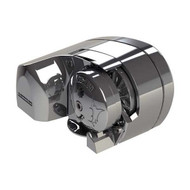
Lewmar Pro-Fish 700 Horizontal Free Fall Windlass
Lewmar Pro-Fish 700 Free Fall Windlass with Switch & Solenoid The Lewmar Pro-Fish is the ultimate windlass for fishermen. This windlass has an automatic freefall that allows you to pull right up over a wreck or ledge and drop anchor with speed and...

Maxwell 135 AMP Breaker/Isolator Panel
Maxwell Marine 135 AMP Breaker/Isolator Panel Maxwell circuit breaker/isolator panels are available to suit a wide range of windlasses and capstans. For protection of the main conductor circuit for DC winches Mount as close as possible to the...

Maxwell 80 AMP Breaker/Isolator Panel
Maxwell Marine 80 AMP Breaker/Isolator Panel Maxwell circuit breaker/isolator panels are available to suit a wide range of windlasses and capstans. For protection of the main conductor circuit for DC winches Mount as close as possible to the battery...
Windlasses, also commonly called winches, are a key element of every boat’s anchoring system. These devices are engineered to restrain and manage anchor chains so that they can be lowered or hoisted from the water. Notches located in the anchor windlasses’ gear wheel engage the links of the chain or anchor roping. These are the integral elements in every anchoring system that receive a lot of wear and tear through strain and friction and occasionally require replacement. Whenever any of your boat’s windlasses malfunction, give Wholesale Marine a call. Our team will have you safely back on the water in no time! Everyone at Wholesale Marine is well-versed in windlass anchor systems and can offer sound advice on exactly what part of your anchoring system your boat requires.
Leading Marine Brands of Windlass Anchors
You can depend on Wholesale Marine to maintain an inventory of only the best brands of windlasses including Anchorlift , Lewmar Marine , Maxwell , Powerwinch , Sea Dog Marine , and Trac Outdoor . Whether you are seeking a dependable windlass like the Lewmar V700 Vertical Windlass with Solenoid and Rocker Switch or a simple Anchor Rode from TRAC , you’ll find the solution to your anchoring system at Wholesale Marine.
There are numerous considerations you should be aware of when selecting a windlass, so be sure to consult with the team at Wholesale Marine for the best advice. Making the right windlass anchor choice will ensure many successful seasons of secure anchoring. You can also always rely on Wholesale Marine to stock the right parts at affordable prices. Be sure to contact us if you have questions about windlass anchors or if you need to place an order. We’re available at (877) 388-262, Monday through Friday from 9:00 AM to 6:00 PM EST. Be sure to ask about our Captains Club Rewards Program for additional savings when shopping at Wholesale Marine.
Oops, something went wrong. Please try again.
You are now logged in!

Boating Basics Online is reader-supported. When you buy via our links, we may earn a commission at no cost to you. Learn more
The Best Anchor Windlasses for Different Types of Boats
Written by J. Harvey / Fact checked by S. Numbers
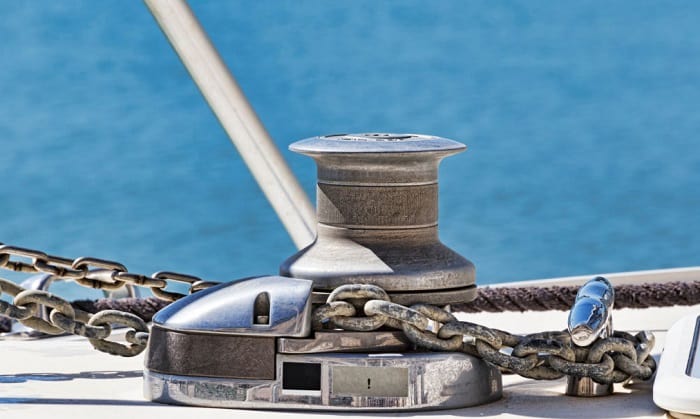
The best anchor windlass, simply put, makes any sailor’s life less of a challenge. Once you pair with the most suitable windlass anchor system for your boating setup, it would seem like the perfect marriage. Once it starts hauling and lowering the anchor for you, you just can’t do sailing and fishing the same way without it.
Anyone with back-breakingly heavy anchors should definitely consider an electric windlass for that sole reason. The best ones out there not only save plenty of effort and time but also power. Here are three factors you should not miss when deciding:
- Pulling Power: Concerning a good anchor windlass’s reliability, it should be able to have adequate, if not abundant, pulling power. Windlasses are more powerful than most winches, so they normally win the anchor winch vs windlass battle when it comes to that. Additionally, that’s why you see a hydraulic anchor windlass on larger ships. So, you should make the most out of it.
- A 24 volt anchor windlass is sufficiently powerful for most applications. However, you should really look at the total number of pounds it can handle. The higher that limit, the more powerful.
- Durability: Anything mostly or entirely made of stainless steel or is genuinely marine-grade is guaranteed to last for years and is saltwater-friendly. It has to be adequately waterproof to protect the motor. What’s good is that most of the brands, especially the ones featured here, get this right. If you’re going to settle for a used anchor windlass for sale, never overlook these facts because they dictate the remaining mileage you can get out of them.
- Ease of Installation: Installation, in terms of windlasses, is something you don’t want to mess up as much as possible. After all, who would want to end up with five extra holes in a vessel just because they got the orientation wrong? Horizontal windlasses tend to be easier to install because everything is set up above deck. That being said, it helps to have clear, complete instructions.
It’s safe to say that you’re looking for one yourself. If so, I suggest you read my boat windlass reviews, which expound on my various experiences with the windlasses I’ve tried over the years. I can say the same for other seafarers I’ve gotten to discuss these handy tools with.

- Anchor lock feature
- Vertical, compact design
- 5-year warranty
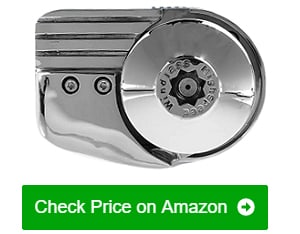
- Superior power
- Install not too complicated
- Corrosion-resistant
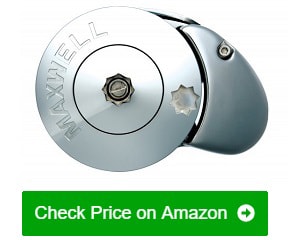
- Built to last
- Consistent performance
- Adequately powerful
Table of Contents
1. Lewmar 6670011108-312 Vertical Windlasses
2. five oceans pacific 1000 anchor windlass, 3. maxwell rc8812v windlass, 4. lewmar 6656811967-303 horizontal windlass, 5. pactrade pdsa0317 electric anchor windlass, 6. lewmar 66910441 windlass, 7. five oceans atlantic 600 anchor windlass, 8. lewmar 6656411108-102 windlass, 9. powerwinch p77727 anchor windlass, 10. five oceans horizontal windlass, 11. maxwell hrcff812v windlass, other factors to consider when choosing an anchor windlass, why is an anchor winch called a windlass, how to install an anchor windlass, how do you use a windlass anchor, how do you maintain the windlass anchor, will a windlass pull rope, top 11 anchor windlass reviews.
A Lewmar creation that fits the high-quality bill, I can’t be more impressed by the fact that it’s saltwater-friendly and extraordinarily space-saving. It performs as expected and comes with a 5-year warranty.
My first introduction to Lewmar was one of their winches. It didn’t take long for me to try out their windlass anchor kit partly because of the performance I got from the winch on my smaller boats, and the fact that I needed support for anchoring on my larger center console. I was instantly hooked by the incredibly polished and solid construction of this bad boy.
That means I don’t have to worry about it getting damaged for a long time, and the 5-year warranty only added to that. And sure enough, I’ve been using this for 7 years and counting, and it still hasn’t shown signs of malfunctioning. I did encounter a few hitches recently like the anchor not pulling up properly, but most of them are because of faulty control that I only needed to replace.
I frequently take my center console to Cape Cod, and I love to do so precisely because this windlass has consistently made anchoring a breeze for me. It’s adequately powerful as it can handle 700 pounds, and I particularly appreciate the anchor lock feature, which keeps my anchor steady when deployed.
The installation is just good, not overly easy, and not too hard. You have to be sure of the cabling. The vertical orientation fits it right in the limited space of the pulpit, and the general design is not without its inherent appeal.
- Stainless steel, rust-resistant, and salt-water friendly construction
- Not that hard to install
- Manually activated free-fall feature
This marine windlass is a paragon of power and durability. Performance-oriented doesn’t even begin to describe the kind of close to automatic, no-nonsense anchoring you get out of this.
I’ve only been using this windlass anchoring system in my Virginia Beach and Lake Erie excursions. I installed it on one of my new cabin cruisers, a 30-foot beauty that I intended to use more for fishing. I reckoned I needed a more powerful windlass that’s equally durable.
Almost immediately, I considered Lewmar and Five Oceans. This 1,000W one stood out to me because of its thicker construction. It’s evidently corrosion-resistant, but given the short time I’ve used it, I can’t confirm this 100% yet.
However, if we’re going to pit power against durability, which is two of its main strengths, I’d choose the former any time. In almost all my fishing trips, I’ve had to deal with loads and loads of seaweed. I mean the kind that gets stuck and adds an extra 200 pounds to the heft. Well, all of that’s just a piece of cake for this monster – no struggle, whatsoever! And it does so consistently.
It’s not that hard to install but you just have to be mindful of the template. Don’t use the arrow as a reference and only stick to the dotted line. I like that, for the price, you get a footswitch included, which can be installed on the bow or console.
- Comes complete and ready to be installed
- Free fall manually activated
A heavy-duty, notably powerful anchor windlass, I like this Maxwell windlass for its versatility when it comes to the different chains that it can accommodate and the fact that you can retrofit it without the need for disassembly.
This is another brand that I have a lot of faith in. It’s my go-to brand if I’m aiming for something to handle any kind of anchor setup I have in place. The fact that it supports a 5/16 chain and ⅝ rope combination highlights its heavy-duty quality. It’s able to handle 500 feet of anchor rode without floundering, and the retrieval is fairly quick.
I’ve taken a 2004 Carver 460 voyager with this windlass to many of my Lake Erie fishing trips. It has only ever given me a great performance in all those times. It’s the kind of windlass that delivers, once you get it properly set up, to the point that relying on it for most of your anchoring becomes automatic.
I’d be lying if I said that I didn’t love the marine-grade stainless steel the moment I laid my eyes on this. I’ve been using mine for more than four years, and it still retains its shine and has no sign of rust damage. You can expect as much from a household brand like this.
The combination of power, durability, and versatility leads to outstanding reliability. I don’t remember any instance this struggled with all the extra seaweed and muck it hauled on board.
- Works well with
- Installation instructions are too concise
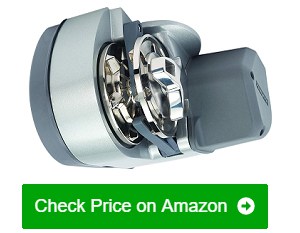
This Lewmar horizontal windlass provides a solid option for those with minimal deck space. It has decent pulling power and a free fall feature, while also being space-saving, durable and not hard to install.
I bought this years ago for one of my very first sailboats. It’s a 25-footer that I cruised with on an almost monthly basis. I had plenty of time back then, and this windlass definitely made boating life easy for me and fueled my passion for it more.
I like that the kit it comes in gives you everything you need. I didn’t have to buy separate mounting studs for the installation. It also came with push-button control and a toggle switch for more convenience. Overall, I can say that it’s one of the first user-friendly windlasses I’ve used.
Installation went fairly swiftly because I already have experience installing Lewmar. The brand didn’t pull any punches when lending an extra hand because they even included a template for drilling holes and mounting to accommodate the rode and chain. It took less than an hour, which is quick for most DIY jobs.
Its power is enough for most medium-sized anchors and below. Don’t expect it to compete with higher-end options out there, but don’t underestimate, too. While it did struggle with seaweed on rare occasions, they’re fairly mild issues that got resolved quickly without hiccups. I only needed to do the usual pull-up trick when the anchor snags.
I know that most horizontal windlasses naturally save more space than their vertical counterparts. To me, this one saves even more because of the overall compact design. I like that it manages seawater well, too. My own unit has been splashed with it thousands of times, but it held up well until I had no other choice but to replace it due to its age.
- Complete kit
- User-friendly and adequately powerful
- Saltwater-friendly
- Relatively easy to install
- Space-saving design
- Free fall feature included but needs to be activated manually
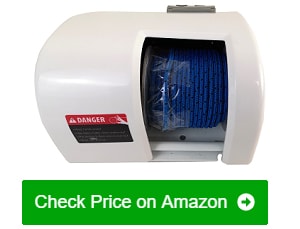
This, to me, is a budget-friendly windlass anchor winch for those who like to do solo fishing on a pontoon or any other similar small vessel. It’s made of marine-grade materials, can handle anchors weighing no more than 20 pounds, and is reliable on the whole.
This windlass reminded me more of a winch than a traditional manual windlass. I’d say it fits the windless anchor winch label perfectly with that considered.
I like to do recreational fishing from time to time. In such cases, I prefer to bring a more solo-oriented vessel with a winch for obvious reasons. For that, I often rely on a winch, but the fact that this is advertised as a windlass definitely caught my eye.
Right off the bat, I was expecting it to be more powerful. Well, while it did have sufficient pulling power, it’s not exactly the output of a typical windlass. I’m really more inclined to think it’s a winch, since it’s, more or less, the same in construction and capacity.
That being said, it’s reliable, at best. I often use a grapnel anchor with it, and the good thing is that the lake near my home mainly has a rocky bottom. It does its job without giving me the usual hassles (e.g. free-spooling), and to me, that’s the most important thing.
The rope it comes with is also worth praising for its overall soundness. It kept me steady in all the times I used it. I did inevitably replace it with a monofilament fishing rode, which allowed me to work with a longer line.
- Made of durable, marine-grade materials
- Adequate pulling power for light anchors
- Proven reliability
- Rode can be changed
- Limited to small vessels
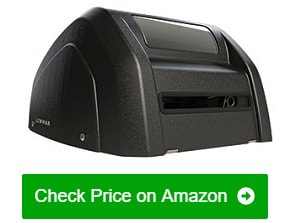
Another windlass for small boats that’s made by a recognized brand, this Lewmar creation fits lightweight anchoring purposes . It does the job well and quickly, especially if anchor reeling is the topic. What’s even better is that you can get it for far fewer bucks than others made by this brand.
A friend of mine has this on his 22’ Grady Offshore. I’ve gone fishing on his boat numerous times already to know this little gem of a windlass’s remarkable performance. I particularly like that it’s quick to bring up any anchor, assuming it’s within the weight limit, that you hook up to it.
We like to frequent Lake Erie with his vessel, and for all the extensive time we’ve spent fishing, it still hasn’t shown any signs of significant salt damage. That’s four or more years of regular use, as far as healthy fishing habits are concerned. I credit the entire stainless steel construction of the cover, and my friend echoes the same thoughts.
- Good value for the price
- Highly affordable
- Powerful anchor pulling capability for its size
- Proven durability
- Included rope tends to wind up
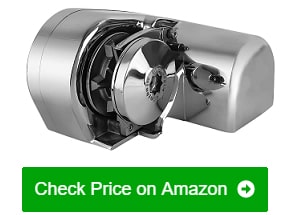
If you’re aiming for maximum quality, this windlass is sure to deliver. To me, it’s just as powerful as the other Five Oceans windlass I own and has the same kind of toughness, both of which can be enjoyed for less than a few hundred dollars.
This is one of my first experiences with what can be deemed as a truly high-end windlass. I say that in the highest sense of the term. After all, I’ve yet to own a windlass, other than the one from the same brand, that has this much durability.
It’s been on my 33’ center console for close to eight years, and it hasn’t shown any notable signs of depreciation. There’s zero presence of rust, and I have only been doing minimal maintenance on it through the years. I’ve taken it to numerous saltwater and freshwater fishing trips, and it has only ever given me all the anchoring conveniences I wanted from it.
This kit is slightly cheaper because the windlass, as a whole, is less powerful than the others that it shares a product line with. It’s only 600W compared to the 1,000W found in other windlasses. But, of course, that kind of output is still no pushover compared to windlass products available nowadays.
- Proven to last for years
- Reliable performance
- More budget-friendly option from a high-end brand
- Made entirely of stainless steel
- Costs thrice as much as most windlasses featured here
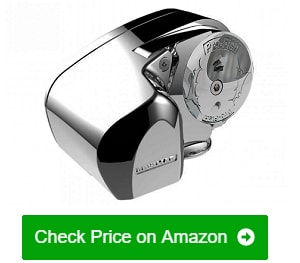
With an automatic free fall feature and powerful motor, this one fits the bill if you also happen to be working with a relatively larger vessel. It’s brimming with durability, too.
I needed a windlass for my bigger 36’ Sportsman boat, which I and my buddies love to take during our annual and semi-annual get-togethers. I instantly loved its free fall feature since it’s automatic. If you tend to anchor a lot like me and are familiar with the best spots to drop it, you’ll love the unrivaled benefits of this feature.
It’s been with me for close to three years now. As of this writing, it has weathered most of the storms that it faced, which are relatively fewer compared to other vessels I’ve manned. The stainless steel finish is as sleek as it is sturdy, so I have no complaints there whatsoever.
Its performance and power are two of its main strengths, to me. For one, unlike other products I’ve used, it has never given me a rode headache (i.e. the rode ending up in a tangled mess when I pull it up). Secondly, it handles my heavier-weight anchors and the extra load that comes with them without struggling too much.
- Automatic free fall
- Suitable for larger boats and heavier anchors
- Sleek and durable stainless construction
- Prevents rode from piling up
- Crank has to be turned manually at times
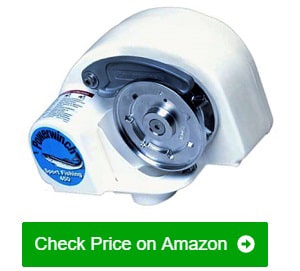
This windlass will wow you with its free fall capabilities. Add to that the decent pulling power and the superb durability, and you pretty much get a solid windlass that gets the job done.
Precision and quick free falling when anchoring will always be my thing, and I love that this windlass has always outshone the other ones I’ve owned when it comes to that feature. I use it on my 35’ center console with a 30-pound Danforth anchor. It drops anchor as quickly as it advertises.
Take note that you need a relatively heavy anchor to enjoy speedy and precise anchor drops every time. I’ve tried it out with a 25-pound Danforth, and it’s just not the same. That’s one complaint I have, but I know the exact reason why that’s the case, so it’s still a minor issue.
The pulling power is decent, but it’s to be expected given its capacity. It’s not too strong and not too weak, just enough to raise my heavy anchor every time. What sealed the deal for me was that it never once jammed in all the two years I’ve used it.
I can say the same for the construction and the overall durability. It’s still great, but not too outstanding. I appreciate the inclusion of stainless steel on parts that require the most rust protection.
- Excellent free fall feature
- Decent pulling power and durability
- Has never jammed based on experience
- Affordable option
- Needs a heavy anchor to make the most out of the free fall feature
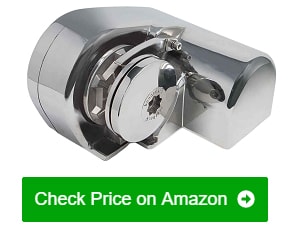
Five Oceans remains one of my favorite brands precisely because of products like this. It’s generous in power and durability, which equates to better reliability. Design-wise, it’s hard to beat.
I really appreciate the fact that this windlass did not take long for me to install. It only took me less than an hour to set it up on my sportfishing boat, and yes, that already includes the wiring. That’s way less time I spent on other windlass setups without relying on professional help, and I mainly credit the kit it comes in, which gave me everything I needed.
How does it fare when it comes to performance? I placed most of my bets on the motor when I bought it, and I’m glad I did because it’s noticeably powerful. I can’t name plenty of other brands that pack the same amount of punch in pulling power, and I’m talking about handling seaweed-laden 30-pound Danforth anchors with relative ease when I say this.
When it comes to durability, it delivers precisely what I’ve come to expect from this brand. This is one of my newer windlasses made by this brand, but I’m already confident that it will last for years because of the stellar stainless steel used. I just hope I can say the same for the motor.
- Easy to install
- Great for those with minimal locker space for the rode
- Excellent power
- Superb durability
- No free fall feature
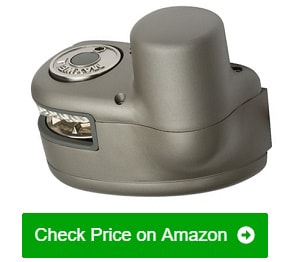
It’s hard to not have favorites, especially once you’ve given this windlass a try. It has an automatic free fall feature, marine-grade construction, and an exceptionally powerful motor.
In most cases when Lewmar or other brands fail me, Maxwell almost always manages to save my fishing trips for me. That has been the pattern for me in recent years, and I can safely say that this Maxwell offering can vie for the top spot at any time. For one, it’s got the power and all the features and perks I’m looking for.
I love that you can activate the automatic free fall from the helm. The power-down option is just as good, but if you like to save lots of time like me, this windlass practically does so for you with its free fall option. It has few rivals when it comes to that.
I’ve been using this windlass for a good portion of five years already. It served as a replacement for an old Lewmar on my center console. In all that time, it has never snagged the anchor once, and if it did, it’s more because of my choice of anchoring spot than anything else.
Of course, I can’t forget about the power. It’s the kind that pulls 35-pound anchors without any issue. That, plus the equally commendable toughness of the materials completes the entire thing for me.
Lastly, its install instructions are just as complete. These are the exact reasons why if this ever becomes available with a discount, it’s certainly a good windlass for sale – if not entirely excellent.
- Automatic free fall feature
- Exceptional power and durability
- Excellent and hassle-free control setup
- Uncomplicated installation
- No snags based on first-hand experience
- Plastic chain stripper tends to warp quickly
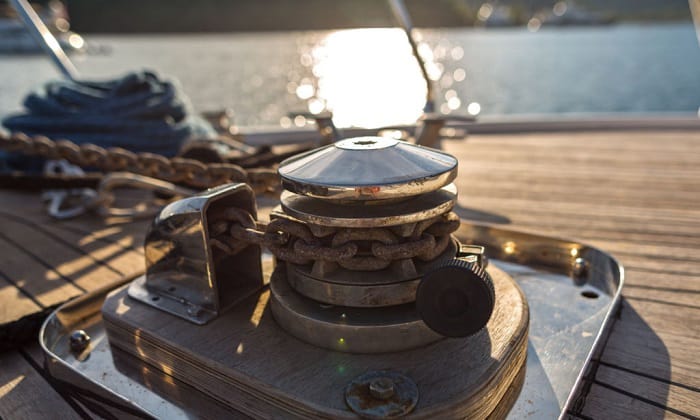
What, to me as an avid sailor and boater, is the right electric anchor windlass? I usually don’t depart from these factors:
I can’t get enough windlasses with free fall features because they save me a lot of time and effort. I do only use it on lakes whose bottoms I’m already familiar with and make sure that I’m using an anchor with enough heft.
Automatic free fall means you get to activate the feature without having to manually trigger it on the built-in switch attached to the windlass. You need to be able to do it remotely through the helm if you want the best kind of convenience. Manual is also good, but you have to always be near the windlass to activate it.
Locker Space
You want to make sure the windlass you’re using can accommodate the entire rode with regards to the total capacity of your locker space. In most cases, horizontal windlasses take up less space than their vertical counterparts.
Availability of Spare Parts
This one’s often overlooked. If you’re planning to buy an aftermarket windlass anchor system for cheaper prices, you’ll most likely have to buy a separate part to replace a broken one (e.g. a damaged motor or something more specific like the chain stripper). Not all brands offer spare parts nor can they guarantee that supplies will always be available.
The Different Types of Anchor Windlasses
There are only two different types of anchor windlasses. They’re commonly classified based on their orientation, which more or less, affects the anchor windlass operation.
- Horizontal Windlasses
These are preferred because their rodes tend to take up less locker space and are usually easier to install since everything is set up above deck. This means you won’t have to make a hole on your deck to install it.
- Vertical Windlasses
Vertical windlasses are not without their own unique range of benefits. For one, they take up less space on the deck, and there are brands that capitalize on that by making their products more compact. Another benefit is that the chain and rode tend to have a more secure wrap around the gypsy due to the orientation.
Benefits and Drawback of Using an Anchor Windlass
As far as most boaters can tell, an anchor windlass assists you in all your anchoring needs. The way it makes raising the anchor less of a hurdle to overcome each time you go out fishing or cruising on your own underscores its value.
If you have a poor back or any condition that lowers your ability to haul an anchor, a windlass is a must. Overall, it makes fishing on your own always viable and enjoyable.
The most immediate drawback for me and many boaters is the cost. For context, let’s look at one of the most expensive Lofrans windlass products available today. It sells for a whopping $4,250. $1,000, which is the average cost of the windlasses I’ve used over the years, is not exactly cheap as well.
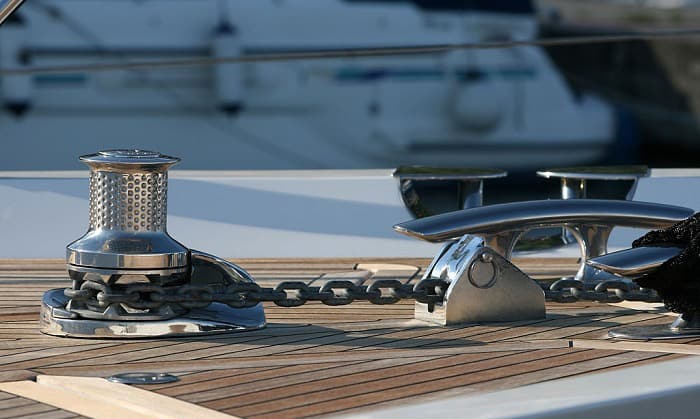
This is often a misconception or mislabeling because both fulfill the same function of raising and lowering the anchor. That’s why some brands label their windlass as a winch and vice versa. A windlass is different from a winch in that it accommodates more rode combinations and a chain, while a winch is fairly limited. The same goes for the power: expect windlasses to be more heavy-duty.
This depends, as I’ve said, on the orientation. Horizontal windlasses often only need to be screwed onto the deck and would therefore require you to drill holes in the right positions. Vertical windlasses have motors that will require you to make room below deck and will therefore need more changes that entail dismantling a portion of your deck.
The procedure step-by-step is an entirely different topic altogether. It’s always best to refer to the manufacturer’s instructions. If you want an actual demonstration, I suggest you watch this video.
Whether you’re controlling the windlass remotely through the helm or on its built-in switch, it’s fairly straightforward. There will be buttons for lowering and raising the anchor. You only need to push down to lower the anchor to your desired depth and push up to raise it.
If there’s a free fall feature, it’s most likely triggered by a specific set of actions that will be instructed to you by the manufacturer. Otherwise, it may be done with a single button push. Once you’ve lowered it to your desired depth, you may use a lanyard or a safety strap to keep the rode or chain locked in place.
Most windlasses are built with durability in mind, so you don’t have to worry too much about maintenance. This is especially true if they’re made of stainless steel. A little polishing and cleaning on a monthly basis will suffice for these kinds of windlasses.
That being said, it won’t hurt to check the motor for any signs of water damage from time to time. Inspect the wiring for anything amiss. Lubricate most of the moving parts to keep the operation smooth. Lastly, don’t forget to check the rode you’re using and make sure it’s still achieving the right amount of tension and hasn’t been damaged before setting sail again.
No. It’s not compatible with rope. Many brands like to label their winch as a windlass, and the former can definitely work with rope. That has probably only led to this confusion.
What can I say about the windlasses I’ve tried and featured here? It’s that you don’t have to pay $2,000 or more just to get one that will make your solo fishing and boating trips a whole lot more convenient. At the end of the day, the best anchor windlass, to me, satisfies that factor while still managing to bring its much-coveted benefit and do so for a long time.

“My intention from the first day establishing Boating Basics Online is to provide as much help as possible for boaters who want to experience a first safe and convenient trip. So feel free to join us and share your beautiful journeys to the sea!”
KE+ Electronic Engine Controls: Prices are Low – Don't be Slow!

- Advice & How To
How to Select an Anchor Windlass for your Boat
The Right Anchor Windlass Depends on:
A few factors. However, having the correct anchor windlass will make even the most difficult anchoring situations much easier and safer. A few factors you'll need to know before purchasing a windlass are: boat size and type, displacement, anchor weight, anchor rode and hardware weight, and chain size. What about anchoring environment? The anchor windlass is responsible for pulling the weight of the ground tackle, to offset the effects of bad weather, the boats main engines do all the heavy lifting.
Lofrans offers a Windlass Selection Guide Here
Choosing Between Manufacture Brands:
Both Lofrans and Muir make the best marine windlasses you can choose from. At Seatech Marine, we only offer windlasses that we can fully support and know full well the customer will be satisfied. We have serviced and installed every brand of windlass here in the boating community of San Diego, CA for more than a decade and Lofrans and Muir windlass are the only ones we will offer. The difference comes down to preference but there is a wide selection for every boat type. We also offer the E-Z Anchor Puller .
How Will the Windlass Be Powered?
You can purchase a manual, DC or AC powered windlass, or a Hydraulic powered windlass. Our most commonly sold boat windlasses are the DC Powered units.
You can choose a manual windlass , where you provide the energy; they are less expensive, easier to install, and require neither the wiring nor the plumbing of electric and hydraulic windlasses.
Electric windlasses are the most power anchor windlasses for sailboats and powerboats. They supply generous lifting power to make anchoring a simple task of pressing a foot switch or pushing a button. The electric windlasses are fairly compact and can typically be powered using the boat's existing electrical system.
Hydraulic windlasses supply the most power and are extremely efficient. They require a central hydraulic system within the yacht to power them. Because of this reason, they are typically installed on large yachts.
Rope/Chain Combination or All Chain?
Most people will fit rope/chain combination anchor rode. The anchor rode usually combines a mid-length piece of chain (10-50') spliced to a high quality 3 strand anchor line. Most of Lofrans vertical windlasses can now use combination rode on a single gypsy or chainwheel. Most of the horizontal windlasses can retrieve both chain and rope. A primary advantage to having rope/chain is having less weight in the bow of the boat.
All chain rode is much easier to retrieve for all windlasses. Chain will not not kink like rope, making the retrieval a faster process. The chain sits in the pocket of the gypsy much easier and because of the weight it will fall into place in the chain locker. Chain is much stronger making it highly abrasion resistant, but is more expensive, heavier, and can collect mud.
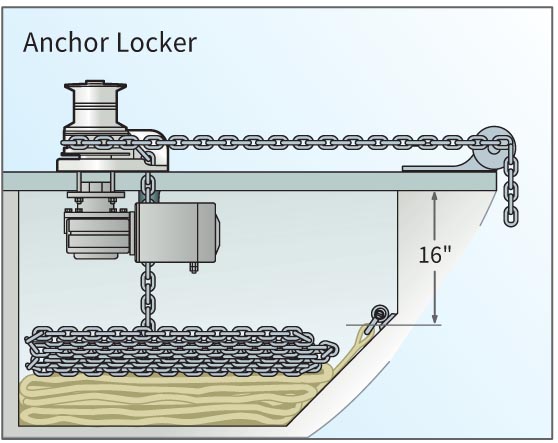
Vertical or Horizontal Windlass:
Vertical windlasses are the most popular choice because there is less of an obtrusive presence on your fore deck. The motor and gearbox are both mounted below deck while the chain wheel is placed on a vertical driveshaft above deck. Vertical windlasses typically retrieve combination rode with a single gypsy. The rode makes a full 180° wrap around the chain wheel and feeds through a deck pipe into the anchor locker at a 90° turn. Vertical windlasses should be used when there is enough room above the available rod fall and the windlass motor. The vertical windlasses usually require a fairly large hole to be cut in the deck for the gearbox. One of our most popular vertical windlasses is the Lofrans Project 1000 for instance.
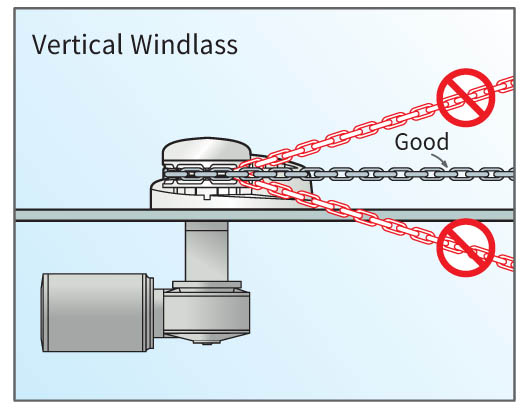
Horizontal windlasses mount the chain gypsy and capstan on either side of the on deck windlass. The gear box and motor are typically installed inside the winch housing above deck. Which means only you only need to cut a whole for the chain pipe, wire and thru-bolts. This leaves plenty of room for the anchor fall in small or unusually shaped anchor lockers. The horizontal windlass usually retrieves rope and chain separately which means most horizontal windlass owners use chain only.

Sizing Considerations:
The anchor windlass is intended to retrieve the anchor and ground tackle, not to pull or drag the boat. A typical rule of thumb is to take the total weight of the anchor and ground tackle and multiply by a factor of three. (for example a boat with a 22lb anchor and 40lbs of anchor rode and hardware would select a windlass with a power rating of more than 62*3= 186lbs). Each windlass that we offer will have the power rating listed in the specifications.
We also offer a sizing chart to help you get started on selecting a windlass based on your boat length. It is merely only meant to be a tool, you should first contact our anchor windlasses experts on our contact page.
What Accessories Do I Need?
- Handheld Remotes (wired or wireless)
- Footswitches included
- Circuit Breakers
- Toggle Switch UP/Down
- Panel Mount Remote Contro l (with Chain Counter) (Wireless and Wired)
- Chain stopper
- Anchor Roller
- Anchor Chain Accessories (Chain Markers, swivels, etc.)
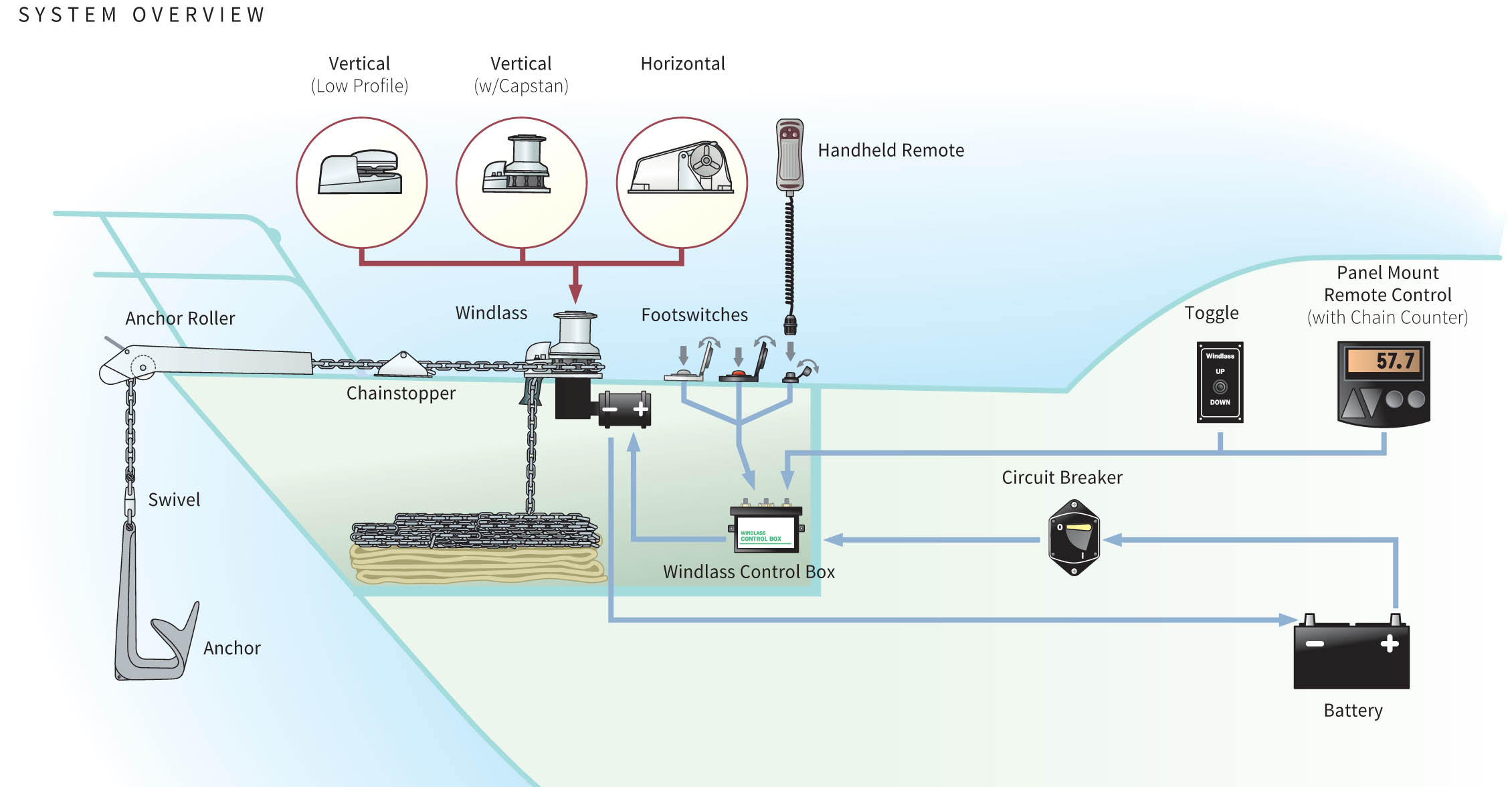

Currency: GBP
- Worldwide Delivery
Mooring Warps and Mooring Lines
- LIROS 3 Strand Polyester Mooring Warps
- LIROS Braided Dockline Mooring Warps
- LIROS Classic Mooring Warps
- LIROS Green Wave 3 Strand Mooring Warps
- LIROS Handy Elastic Mooring Warps
- LIROS Moorex12 Mooring Warps
- LIROS Octoplait Polyester Mooring Warps
- LIROS Polypropylene Floating Mooring Warps
- LIROS Super Yacht Mooring Polyester Docklines
- Marlow Blue Ocean Dockline
Mooring Accessories
- Mooring Cleats and Fairleads
- Mooring Compensators
- Mooring Shackles
- Mooring Swivels
Mooring Strops
- LIROS 3 Strand Nylon Mooring Strops
- LIROS Anchorplait Nylon Mooring Strops
- Small Boat and RIB Mooring Strops
Mooring Bridles
- V shape Mooring Bridles
- Y shape Mooring Bridles
Mooring Strops with chain centre section
- 3 Strand / Chain / 3 Strand
- Anchorplait / Chain / Anchorplait
Bonomi Mooring Cleats
- Majoni Fenders
- Polyform Norway Fenders
- Dock Fenders
- Fender Ropes and Accessories
- Ocean Inflatable Fenders
Mooring Buoys
Max power bow thrusters.
- Coastline Bow Thruster Accessories
50 metre / 100 metre Rates - Mooring
Mooring information.
- Mooring Warps Size Guide
- Mooring Lines - LIROS Recommended Diameters
- Mooring Rope Selection Guide
- Mooring Warp Length and Configuration Guide
- How to estimate the length of a single line Mooring Strop
- Mooring Ropes - Break Load Chart
- Mooring Compensator Advisory
- Rope Cockling Information
- Fender Size Guide
- Majoni Fender Guide
- Polyform Norway Fender Inflation Guide
Custom Build Instructions
- More Article and Guides >
Anchor Warps Spliced to Chain
- LIROS 3 Strand Nylon Spliced to Chain
- LIROS 3 Strand Polyester Spliced to Chain
- LIROS Anchorplait Nylon Spliced to Chain
- LIROS Octoplait Polyester Spliced to Chain
Anchor Warps
- Leaded Anchor Warp
- LIROS 3 Strand Nylon Anchor Warps
- LIROS 3 Strand Polyester Anchor Warps
- LIROS Anchorplait Nylon Anchor Warps
- LIROS Octoplait Polyester Anchor Warps
- Aluminium Anchors
- Galvanised Anchors
- Stainless Steel Anchors
Calibrated Anchor Chain
- Cromox G6 Stainless Steel Chain
- G4 Calibrated Stainless Steel Anchor Chain
- Lofrans Grade 40
- MF DAMS Grade 70
- MF Grade 40
- Titan Grade 43
Clearance Chain
Anchoring accessories.
- Anchor Connectors
- Anchor Trip Hooks and Rings
- Anchoring Shackles
- Bow Rollers and Fittings
- Chain and Anchor Stoppers
- Chain Links and Markers
50 / 100 metre Rates - Anchoring
Chain snubbers.
- Chain Hooks, Grabs and Grippers
- Chain Snubbing Bridles
- Chain Snubbing Strops
Drogue Warps and Bridles
- Lewmar Windlasses
- Lofrans Windlasses
- Maxwell Windlasses
- Quick Windlasses
Windlass Accessories
- Coastline Windlass Accessories
- Lewmar Windlass Accessories
- Lofrans Windlass Accessories
- Lofrans Windlass Replacement Parts
- Maxwell Windlass Accessories
- Quick Windlass Accessories
Anchoring Information
- How To Choose A Main Anchor
- Anchoring System Assessment
- Anchor Chain and Rope Size Guide
- The Jimmy Green Guide to the Best Anchor Ropes
- What Size Anchor Do I Need?
- Anchor Size Guides
- Anchor Rope Break Load and Chain Compatibility Chart
- How to Choose Your Anchor Chain
- How to Establish the Correct Anchor Chain Calibration?
- Calibrated Anchor Chain - General Information
- Calibrated Anchor Chain Quality Control
- Calibrated Chain - Break Load and Weight Guide
- Galvanising - Managing Performance and Endurance expectation
- Can Galvanised Steel be used with Stainless Steel?
- Windlass Selection Guide
- More Articles and Guides
Stainless Steel Wire Rigging and Wire Rope
- 1x19 Wire Rigging
- 7x19 Flexible Wire Rigging
- Compacted Strand Wire Rigging
- Insulated 1x19 Wire Backstays
Wire Rigging Fittings
- Swaged Terminals
- Swageless Terminals
- Turnbuckles / Rigging screws
- Turnbuckle Components
- Backstay Insulators
- Wire Terminals
Rigging Accessories
- Babystay and Backstay Adjustment
- Backing Plates
- Backstay Blocks
- Pins, Rings and Nuts
- Rigging Chafe Protection
Fibre Rigging
- DynIce Dux Fibre Rigging
- LIROS D-Pro Static Rigging
- LIROS D-Pro-XTR Fibre Rigging
- Marlow Excel D12 MAX 78 Rigging
- Marlow M-Rig Max Rigging
Fibre Rigging Fittings
- Blue Wave Rope Terminals
- Colligo Marine Terminals
Dinghy Rigging
- Dinghy Rigging Fittings
- Fibre Dinghy Rigging
- Stainless Steel Dinghy Rigging
Wind Indicators
Guard wires, guardrails and guardrail webbing.
- Guard Rail Fittings
- Guard Rails in Fibre and Webbing
- Guard Wire Accessories
- Guard Wires
Furling Systems
- Anti-torsion Stays
- Headsail Reefing Furlers
- Straight Luff Furlers
- Top Down Furlers
Furling Accessories
- Continuous Furling Line Accessories
- Furling Line Accessories
50 / 100 metre Rates - Wire and Fibre
Standing rigging assistance.
- More Articles and Guides >
- Cruising Halyards
- Performance Halyards
- Dinghy Halyards
Rigging Shackles
- Bronze Snap Shackles
- Captive and Key Pin Shackles
- hamma™ Snap Shackles
- Selden Snap Shackles
- Soft Shackles
- Standard Snap Shackles
- Tylaska End Fittings
- Wichard Snap Shackles
Lashing, Lacing and Lanyards
- LIROS 3 Strand Lashing, Lacing and Lanyards
- LIROS Braided Lashing, Lacing and Lanyards
- Cruising Sheets
- Performance Sheets
- Dinghy Sheets
- Continuous Sheets
- Tapered Sheets
Running Rigging Accessories
- Anti-Chafe Rope Protection
- Barton Sail Handling
- Lazy Jack Sail Handling
- Rodkickers, Boomstruts
- Sail Handling Accessories
- Slab Reefing
Shock Cord and Fittings
Control lines.
- Cruising Control Lines
- Performance Control Lines
- Dinghy Control Lines
- Continuous Control Lines
Classic Ropes
- 50 / 100 metres - Classic
- Classic Control Lines
- Classic Docklines
- Classic Halyards
- Classic Sheets
- LIROS Classic 3 Strand Polyester
50 / 100 metre Rates - Running Rigging
- 50 / 100 metres - Cruising Ropes
- 50 / 100 metres - Dinghy Ropes
- 50 / 100 metres - Lashing and Lanyards
- 50 / 100 metres - Performance Ropes
- LIROS Ropes
- Marlow Ropes
Running Rigging Resources
- Running Rigging Rope Fibres and Construction Explained
- How to Select a Suitable Halyard Rope
- How to select Sheets and Guys
- Dyneema Rope - Cruising and Racing Comparison
- Dinghy Rope Selection Guide
- Rope Measurement Information
- Running Rigging - LIROS Recommended Line Diameters
- Running Rigging Break Load Comparison Chart
- Colour Coding for Running Rigging
- Selecting the right type of block, plain, roller or ball bearing
- Replacing your Furling Line
- Recycling Rope
- Running Rigging Glossary
Custom Build Instructions for Sheets, Halyards, Control Lines
Low friction rings, plain bearing blocks.
- Barton Blocks
- Harken Element Blocks
- Seasure 25mm Blocks
- Selden Yacht Blocks
Wooden Blocks
Ball bearing blocks.
- Barton Ball Bearing Blocks
- Harken Ball Bearing Blocks
- Holt Dynamic Blocks
- Selden Ball Bearing Blocks
Ratchet Blocks
- Harken Ratchet Blocks
- Selden Ratchet Blocks
Roller Bearing Blocks
- Harken Black Magic Blocks
- Selden Roller Bearing Blocks
Clutches and Organisers
- Barton Clutches and Organisers
- Lewmar Clutches
- Spinlock Clutches and Organisers
Genoa Car Systems
- Barton Genoa Sheeting
- Harken Genoa Systems
- Lewmar HTX Genoa Systems
Traveller Systems
- Barton Traveller Systems
- Harken Traveller Systems
Deck Fittings
- Bungs and Hatches
- Bushes and Fairleads
- Deck Eyes, Straps and Hooks
- Pad Eyes, U Bolts and Eye Bolts
Rudder and Transom Fittings
- Pintles and Gudgeons
- Tiller Extensions and Joints
Stanchion Blocks and Fairleads
Snatch blocks.
- Barton K Cam Cleats
- Harken Ball Bearing Cam Cleats
- Holt Cam Cleats
- Selden Cam Cleats
- Spinlock PXR Cleats
Block and Tackle Purchase Systems
- Barton Winches, Snubbers and Winchers
- Coastline Electric Winch Accessories
- Harken Winches, Handles and Accessories
- Karver Winches
- Lewmar Winches, Handles and Accessories
- Winch Servicing and Accessories
Deck Hardware Support
- Blocks and Pulleys Selection Guide
- Barton High Load Eyes
- Dyneema Low Friction Rings Comparison
- Seldén Block Selection Guide
- Barton Track Selection Guide
- Barton Traveller Systems Selection Guide
- Harken Winch Selection Guide
- Karver Winch Comparison Chart
- Lewmar Winch Selection Guide - PDF
- Winch Servicing Guide

Sailing Flags
- Courtesy Flags
- Red Ensigns
- Blue Ensigns
- Flag Accessories
- Flag Staffs and Sockets
- Flag Making and Repair
- Signal Code Flags
- Galvanised Shackles
- Stainless Steel Shackles
- Titanium Shackles
- Webbing only
- Webbing Restraint Straps
- Webbing Sail Ties
- Webbing Soft Shackles
Hatches and Portlights
Sail care and repair.
- Sail Sewing
Maintenance
- Antifouling
- Fillers, Sealants, Adhesives
- Primers and Thinners
- PROtect Tape
Fixings and Fastenings
- Monel Rivets
- Screws, Bolts, Nuts and Washers
- U Bolts, Eye Bolts and Pad Eyes
Splicing Accessories
- Fids and Tools
- Knives and Scissors
General Chandlery
- Barrier Ropes
- Canvas Bags and Accessories
- Carabiners and Hooks
- Netting and Accessories
- Rope Ladders
Seago Boats and Tenders
Chandlery information, flag articles.
- Flag Size Guide
- Bending and Hoisting Methods for Sailing Flags
- Courtesy Flags Identification, Labelling and Stowage
- Courtesy Flag Map
- Flag Etiquette and Information
- Glossary of Flag Terms and Parts of a Flag
- Making and Repairing Flags
- Signal Code Message Definitions
Other Chandlery Articles
- Anchorplait Splicing Instructions
- Antifoul Coverage Information
- Hawk Wind Indicator Selection Guide
- Petersen Stainless - Upset Forging Information
- Speedy Stitcher Sewing Instructions
- Thimble Dimensions and Compatible Shackles
Jackstays and Jacklines
- Webbing Jackstays
- Stainless Steel Wire Jackstay Lifelines
- Fibre Jackstay Lifelines
- Jackstay and Lifeline Accessories
Safety Lines
Lifejackets.
- Children's Life Jackets
- Crewsaver Lifejackets
- Seago Lifejackets
- Spinlock Lifejackets
Buoyancy Aids
Life jackets accessories.
- Lifejacket Lights
- Lifejacket Rearming Kits
- Lifejacket Spray Hoods
Overboard Recovery
- Lifebuoy Accessories
- Purchase Systems
- Slings and Throwlines
Floating Rope
- LIROS Multifilament White Polypropylene
- LIROS Yellow Floating Safety Rope
- Danbuoy Accessories
- Jimmy Green Danbuoys
- Jonbuoy Danbuoys
- Seago Danbuoys
- Liferaft Accessories
- Seago Liferafts
Safety Accessories
- Fire Safety
- Grab Bag Contents
- Grab Bags and Polybottles
- Handheld VHF Radios
- Sea Anchors and Drogues
Safety Resources
- Guard Wires - Inspection and Replacement Guidance
- Guard Wire Stud Terminal Dimensions
- Webbing Jackstays Guidance
- Webbing Jackstays - Custom Build Instructions
- Danbuoy Selection Guide
- Danbuoy Instructions - 3 piece Telescopic - Offshore
- Liferaft Selection Guide
- Liferaft Servicing
- Man Overboard Equipment - World Sailing Compliance
- Marine Safety Information Links
- Safety Marine Equipment List for UK Pleasure Vessels
Sailing Clothing
- Sailing Jackets
- Sailing Trousers
- Thermal Layers
Leisure Wear
- Accessories
- Rain Jackets
- Sweatshirts
Sailing Footwear
- Dinghy Boots and Shoes
- Sailing Wellies
Leisure Footwear
- Walking Shoes
Sailing Accessories
- Sailing Bags and Holdalls
- Sailing Gloves
- Sailing Kneepads
Clothing Clearance
Clothing guide.
- What to wear Sailing
- Helly Hansen Mens Jacket and Pant Size Guide
- Helly Hansen Womens Sailing Jacket and Pant Size Guide
- Lazy Jacks Mens and Womens Size Charts
- Musto Men's and Women's Size Charts
- Old Guys Rule Size Guide
- Sailing Gloves Size Guides
- Weird Fish Clothing Size Charts
The Jimmy Green Clothing Store
Lower Fore St, Beer, East Devon, EX12 3EG
- Adria Bandiere
- Anchor Marine
- Anchor Right
- August Race
- Barton Marine
- Blue Performance
- Brierley Lifting
- Brook International
- Brookes & Adams
- Captain Currey
- Chaineries Limousines
- Coastline Technology
- Colligo Marine
- Cyclops Marine
- Douglas Marine
- Ecoworks Marine
- Exposure OLAS
- Fire Safety Stick
- Fortress Marine Anchors
- Hawk Marine Products
- Helly Hansen
- International
- Jimmy Green Marine
- Maillon Rapide
- Mantus Marine
- Marling Leek
- Meridian Zero
- MF Catenificio
- Ocean Fenders
- Ocean Safety
- Old Guys Rule
- Petersen Stainless
- Polyform Norway
- PSP Marine Tape
- Sidermarine
- Stewart Manufacturing Inc
- Team McLube
- Technical Marine Supplies
- Titan Marine (CMP)
- Ultramarine
- Waterline Design
- William Hackett
Clearance August Race Boat Cleaning Kit £26.00
Clearance LIROS Racer Dyneema £55.08
Clearance Folding Stock Anchor £123.25
Clearance LIROS Herkules £0.00
Clearance Barton Size 0 Ball Bearing Blocks - 5mm £10.13
Clearance Marlow Blue Ocean® Doublebraid £18.48
Mooring Clearance
Anchoring clearance, standing rigging clearance, running rigging clearance, deck hardware clearance, chandlery clearance, safety clearance.
Electric Windlasses for anchoring are standard equipment for most new sailing yachts and motorboats.
Upgrades on older yachts are increasingly popular with the advent of improved DC electric charging systems and the tendency towards longer lengths of anchor chain.
The Jimmy Green Team can advise you on all the options regarding your anchoring system, whether you are looking for a suitable matching component to replace a part of the existing setup or starting afresh.
Team Jimmy Green can help you match a new or replacement windlass to your existing chain and anchor, advising you on all aspects of the selection process, including the calibration of the gypsy and all the accessories required to finish the installation.
Team Jimmy Green can also provide you with all the necessary information to determine the optimum new windlass, including suggestions for your corresponding anchor rode setup, i.e. chain, warp, combinations, connectors, shackles and anchors.
Select from four top-quality windlass manufacturers: Lofrans, Lewmar, Maxwell and Quick. Each brand also has a wide range of Windlass Accessories, including Chain Counters, Foot Switches, Control Boxes, Circuit Breakers, Remote Controls, Handles, Maintenance Kits and Spare Parts.
The Windlass Selection Guide provides more information about windlass selection criteria, and you will find more specific information for each manufacturer in their category below.
Boat Length (Windlasses)
- up to 20 feet (13) up to 25 feet (28) up to 30 feet (26) up to 35 feet (29) up to 40 feet (30) up to 45 feet (21) up to 50 feet (11) up to 55 feet (7) up to 60 feet (10) up to 65 feet (8) up to 70 feet (6) up to 75 feet (6) up to 80 feet (3) up to 85 feet (3) up to 90 feet (4) up to 100 feet (2) up to 120 feet (2)
Horizontal or Vertical
- Horizontal (18) Vertical (31)
- 6mm (25) 7mm (6) 8.7mm (5/16 US Specification) (1) 8mm (33) 10mm (26) 12mm (11) 13mm (4) 14mm (4)
Accessories and Spares
- Chain Counter (8) Chain Pipe (1) Chain Stopper (1) Circuit Breaker (4) Control Box (4) Conversion Kit (1) Foot Switch (9) Handle (1) Maintentance Kit (4) Motor (3) Remote Control (14) Spare Parts (23) Switch (6)

Lofrans X2 Vertical Windlass
Quick prince dp2 vertical windlass, lofrans x1 vertical windlass.

Lewmar VX2+ Vertical Windlass
Lofrans kobra horizontal windlass, lofrans royal manual horizontal windlass, lofrans dorado horizontal windlass, lofrans x3 vertical windlass, lofrans falkon horizontal windlass, lofrans cayman horizontal windlass, lofrans tigres horizontal windlass, lewmar v700 vertical windlass.

Service Locator
- Angler Endorsement
- Boat Towing Coverage
- Mechanical Breakdown
- Insurance Requirements in Mexico
- Agreed Hull Value
- Actual Cash Value
- Liability Only
- Insurance Payment Options
- Claims Information
- Towing Service Agreement
- Membership Plans
- Boat Show Tickets
- BoatUS Boats For Sale
- Membership Payment Options
- Consumer Affairs
- Boat Documentation Requirements
- Installation Instructions
- Shipping & Handling Information
- Contact Boat Lettering
- End User Agreement
- Frequently Asked Questions
- Vessel Documentation
- BoatUS Foundation
- Government Affairs
- Powercruisers
- Buying & Selling Advice
- Maintenance
- Tow Vehicles
- Make & Create
- Makeovers & Refitting
- Accessories
- Electronics
- Skills, Tips, Tools
- Spring Preparation
- Winterization
- Boaters’ Rights
- Environment & Clean Water
- Boat Safety
- Navigational Hazards
- Personal Safety
- Batteries & Onboard Power
- Motors, Engines, Propulsion
- Best Day on the Water
- Books & Movies
- Communication & Etiquette
- Contests & Sweepstakes
- Colleges & Tech Schools
- Food, Drink, Entertainment
- New To Boating
- Travel & Destinations
- Watersports
- Anchors & Anchoring
- Boat Handling
- ← Seamanship
Anchor Windlasses
Advertisement
Manually hauling in an anchor can be a chore. Rope burn and back strain are potential concerns, unless you have a windlass.
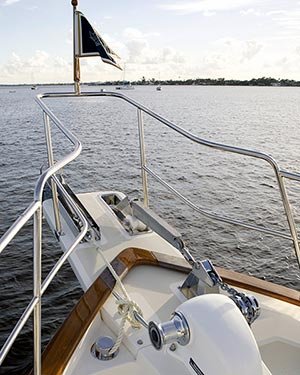
If you drag anchor in a storm, it isn’t unusual to have to make several attempts to reset it. This means that you have to retrieve it after each unsuccessful attempt. While the anchor is dragging along the bottom, your boat is essentially out of control, possibly drifting down onto another boat, the beach or a reef. A windlass allows you to retrieve the anchor much more quickly, without becoming exhausted, or sick, in the process. Whether manual or motor driven, windlasses make anchor retrieval much easier. Boat size and use are the primary factors in determining which type of windlass you will need. However, there is a windlass for every anchor and rode type.
Manual windlasses supplement your muscle power with mechanical advantage. They are available as either lever-type (back and forth motion) or vertical axis (a circular winch-grinding motion). Lever-type windlasses are generally single speed, and vertical models, like sheet winches, usually have two speeds: a fast, low-power gear for light loads, and a slower speed with higher power for when the going gets tougher.
Electric windlasses haul ground tackle aboard with a touch of a button or a step on a button. They are even available with remote or roving controls for operation from the helm or wherever else you'd prefer to be (although it’s usually best to be at the bow when deploying and retrieving an anchor). A helpful option on either model is a self-tailing feature for nylon line which takes in the slack as the line is hauled in and feeds it into the locker below deck. Most chain windlasses have, as a part of the unit, a chain stripper which pulls the chain from the chain wheel and lets it fall, pulled by its weight, through the hole into the chain locker.
(Before going further, let's clarify that we won't be using the term "gypsy" or "wildcat" in this article. There has been much confusion in certain contexts as to which refers to the drum around which a rope is wrapped and the cogged wheel which pulls in the chain. Some use the terms interchangeably. To avoid confusion we'll use the terms "rope drum" or "drum" and "chain wheel.")
Some manufacturers advise that the pulling power of your windlass be three times the unloaded weight of your anchor and chain. However, the more pulling power, the better, within reason. You may be trying to retrieve your anchor in strong current or wind or other adverse conditions, or there may be a snag or other piece of debris on the hook of which you're unaware until it breaks surface. It's important not to over-stress a windlass or use it for loads beyond its capacity, but the stronger the windlass the happier you'll be.
Horizontal or Vertical
Although personal taste and your boating style are factors in choosing either a horizontal or vertical style windlass, much of the decision may have been made when you bought your boat. The size and configuration of the foredeck, chain locker and forepeak dictate some of the criteria. First, let's look at the differences between the two.
Horizontal windlasses are usually housed in a sealed unit mounted on the deck. The windlass is fitted directly over the hawse pipe and positioned in line with the bow roller to ensure a fair lead. The rode is retrieved by the windlass and deposited directly into the chain or rope locker below. Since the rode does not have to make many directional changes, it generally disappears down the hawse pipe neatly without kinking or jamming. Because the motor and gearbox are located on deck, they are easily accessible and easily maintained, although more exposed to the elements. There isn't the necessity of cutting the rather large hole in the deck to accommodate the shaft of the windlass. The price for on-deck convenience and simplicity is paid for in deck space. The horizontal windlass takes up substantially more room than its vertical counterpart. Depending on the model, it can actually stand taller as well, making it an awkward foredeck obstruction, particularly if your foredeck is small.
A horizontal windlass should have a clutch to allow the anchor and rode to essentially free fall. This can be a very useful feature, however this should be used very carefully as it can lead to jamming and other damage and injury.
Vertical windlasses are installed with the motor and gearbox mounted below deck. This leaves the foredeck relatively uncluttered, unless you choose the capstan rope drum option mounted above a chain wheel . Vertical windlasses are versatile, as the rode can be led from any direction. The chain rode wraps around the chain wheel, is stripped off the wheel over the hawse hole and falls down into the chain locker. The rope rode wraps around the drum and leads to the hawse pipe and down into the rope locker, often with a mechanical assist. Again, the configuration of your boat dictates the feasibility of this system. Since the guts of the windlass are below, the motor may interfere with living space or physical limits of the chain locker. Usually the motor and gear box are in the chain locker, out of sight and out of mind, and hard to access and maintain. This is even more of an issue than usual because these components are living in a corrosive salty moist environment in the locker.
To have the rode pay out properly, manufacturers recommend at least 12" clearance from the top of the stowed rode to the top of the locker. The more the clearance the better. Also, the chain locker, with either type windlass, should be relatively narrow and tall to avoid tangles. With either rode it's wise to pull it all out occasionally and run it neatly back in to avoid tangles. Anytime you're in rough seas, there is greater likelihood of rode shifting below and becoming entangled on itself. Before purchasing any windlass, measure your forepeak to see if everything fits and is serviceable. The windlass manufacturer can provide a plan detailing all the dimensions.
What Type of Rode?
All-rope rodes, most frequently used on smaller boats, require windlasses with drums designed for rope. . These are similar in appearance and operation to a sheet winch on a sailboat, the drum hauls in the line wound around the drum. Self-tailing is a feature designed to prevent your line from becoming a massive pile of "spaghetti" on your deck, making it particularly useful with all-rope rodes. A self tailing feature also frees up your hands because you don't have to stand there tailing the line.
All-chain rodes, often favored by larger cruising boats, are handled by all-chain wheels. A self-tailing feature on a chain wheel would be superfluous as the weight of the chain peeling off the wheel will cause the rode to stow itself and the chain, if properly sized for the chain wheel, will be pulled along by the cogs in that wheel. However, a well working chain stripper is critical.
Combination rope/chain rodes rodes are very popular, because length of chain (the more the better) lends a lot of holding power to the anchor and the rope keeps the overall weight of the ground tackle down. Windlasses that handle rope/chain rodes use either a rope drum mounted with a chain wheel , or single unit with both capabilities. A chain wheel handles chain through the use of pockets or cogs which the chain links seat into. Obviously, the chain and the pockets must match, or the chain will hang up or slip out. Combination models also use both a rope drum and a chain wheel, or feature an internal groove in the chain wheel that also handles the rope. Unlike the separate configuration, which requires that you set the chain stopper after retrieving the rope and change to the chain wheel to haul in the chain, the combination model allows easier "hands-off" operation although there's still plenty of opportunity for fouling. Most combination models require that the chain be joined to the rope by a splice, as the unit cannot accommodate a shackle. A proper rope-to-chain splice is reported to retain 95% of the strength of the line while distributing the load evenly along its length. However, it's critical to closely watch the rope to chain splice for wear and abrasion which often occurs. Another advantage to the splice is its ability to accommodate the nylon rode's stretch; a lot of line tension could cause the thimble to pop out in traditional thimble/shackle arrangements.
To simplify the choice between the myriad combinations of rope and chain sizes, many windlass manufacturers offer a few rope/chain models which handle the most commonly used specifications of each. Before you buy chain you should take a few links of it to the boat, or your chain wheel to the store, and see if it properly fits your windlass.
See Anchoring and Choosing the Right Rope for further information.
Installation
Horizontal windlasses are simple to install. As most models are completely self-contained, the only drilling necessary is that for holes for the hawse pipe and bolting the unit down, as well as wiring. Because vertical windlasses are fitted through the deck, some additional expertise/confidence/bravery is called for. Think through the positioning of the system before touching that saw or drill. As mentioned before, you will probably need at least 12" vertical clearance (more is better) from the underside of the deck to the top of the rode in the locker to ensure that it pays out properly. Next, position the windlass template supplied by the manufacturer in the location specified by the manufacturer. If your windlass does not self-tail, position the foot control, if you have one, so that you can comfortably tail the rode. Windlasses weigh a lot and handle high loads; you will probably need to reinforce your deck and spread the load with an aluminum or stainless plate. If you're adding much thickness, advise the manufacturer so they can provide you with longer bolts and possibly a longer shaft for a vertical windlass. Also reinforce the backing for the chain stopper, which holds a huge load at times. If it goes, it may take the windlass with it. Of course, you'll need to apply a silicone or other good marine sealant around the windlass and foot control and switch to prevent leaks. Follow all instructions of the manufacturer, which should normally supersede anything inconsistent said here.
To wire the electric windlass, run appropriate sized cables, which should be tinned and made to ABYC standards, from the unit to a breaker on the breaker panel. There should be a breaker at or near the windlass as well. The size of the cables is determined by the amp draw, the voltage of the windlass and the cable run. Follow manufacturer's instructions carefully. Don't scrimp on wiring.
Since windlasses can use between 35-200 amps or more under load, the running engine may or may not adequately charge the batteries sufficiently as you use the windlass. Many have dedicated windlass batteries in the bow, with a dedicated charging source. A long wire run from the engine space forward will result in what may be an unacceptable amount of voltage drop and can be a potential fire source unless properly protected by breakers, size, insulation and chafing gear. This is a critical subject which should be carefully studied, as it pertains to your boat and equipment, before installation.
Some windlasses are driven hydraulically. These are usually much more powerful and require different powering techniques and equipment.
Using the Windlass
Windlasses haul in the rode and lift the anchor off the bottom-they aren't meant to haul the seabed up to the surface. Although your windlass may be rated at three times the weight of your anchor and chain, take into account strong wind, current, and recalcitrant anchors firmly dug in. Always use your engine, not the windlass, to power up to the anchor and break it loose. If the anchor is firmly set, belay the rode or set the chain stopper, and work it out carefully under power. Don't use the windlass as the stress point for the rode. The shaft will normally not be built to take that. Secure the rode with a cleat (if rope), chain hook or some other method designed to take the load. The well installed chain stopper may take this stress, as well as a strong nylon rope secured to a strong cleat and attached to the chain with chain hook.
Related Articles
The truth about ceramic coatings for boats.
Our editor investigates the marketing claims of consumer-grade ceramic coatings.
Fine-Tune Your Side Scan Fishfinder
Take your side-scanning fishfinder off auto mode, and you’ll be spotting your prey from afar in no time
DIY Boat Foam Decking
Closed-cell foam flooring helps make boating more comfortable. Here’s how to install it on your vessel
Click to explore related articles
BoatUS Editors
Contributor, BoatUS Magazine
Award-winning BoatUS Magazine is the official publication of Boat Owners Association of The United States. The magazine provides boating skills, DIY maintenance, safety, news and more from top experts.
BoatUS Magazine Is A Benefit Of BoatUS Membership
Membership Benefits Include:
Subscription to the print version of BoatUS Magazine
4% back on purchases from West Marine stores or online at WestMarine.com
Discounts on fuel, transient slips, repairs and more at over 1,200 businesses
Deals on cruises, charters, car rentals, hotel stays and more…
All for only $25/year!
We use cookies to enhance your visit to our website and to improve your experience. By continuing to use our website, you’re agreeing to our cookie policy.

Please verify you are a human
Access to this page has been denied because we believe you are using automation tools to browse the website.
This may happen as a result of the following:
- Javascript is disabled or blocked by an extension (ad blockers for example)
- Your browser does not support cookies
Please make sure that Javascript and cookies are enabled on your browser and that you are not blocking them from loading.
Reference ID: a7d9e42f-f553-11ee-a7c6-3769706e4006
Powered by PerimeterX , Inc.

Ex-Display & Sample Sale
- Search for:
No products in the basket.
- Base Layers
- Technical T-Shirts
- Sailing Jackets
- Sailing Trousers
- Dinghy Footwear
- Sweatshirts
- Holebrook Samples
- Pelle Samples
- Changing Robes
- Cleaners & Proofers
- Scarves / Snood
- Dinghy Equipment
- Hi-fits / Trousers
- Hiking Equipment
- Hiking Shorts
- Spray Tops / Smocks
- Full Wetsuits
- Shorty Wetsuits
- Long John Wetsuits
- Wetsuit Tops
- Wetsuit Shorts & Trousers
- Summer Wetsuits
- Winter Wetsuits
- Children’s Wetsuits
- Men’s Wetsuits
- Women's Wetsuits
- Wetsuit Sale
- Technical Clothing
- Casual Clothing
- Hats, Gloves, Socks & Scarves
- Watersports
- Accessories Sale
- Amazing Bundle Deals
- Cables & Accessories
- Fixed GPS/plotters
- GPS Antennas
- Handheld GPS/Plotters
- Marine Cameras
- Mounting/Brackets
- Radar Scanners
- Sailing Watches
- Thermal Cameras
- Waterproof Cases
- Accessories
- Fish Finder Sonar
- Depth Instruments
- Multifunction Systems
- Speed Instruments
- Weather Instruments
- Wind Instruments
- Autopilot Accessories
- Cockpit Autopilots
- Onboard Autopilots
- Navigation Charts
- Plotting Aids
- Entertainment Accessories
- Entertainment Systems
- Speakers & Subs
- Electronics
- 4G and WIFI
- Handheld VHF Radio
- Mounted VHF Radio
- VHF Antennas
- Walkie Talkies
- Buoyancy Aids
- Lifejackets
- Children’s Life Jackets
- Commercial Lifejackets
- Harnesses/Bosuns Chair
- Lifejacket Accessories
- Safety Knives
- Safety Lights
- Safety Lines
- PLB & AIS
- Satellite Communicators
- Fire Extinguishers
- GPS Tracker
- Liferaft Accessories
- Recovery Devices
- Survival Suit
- Cones & Balls
- Dye Markers
- Horns & Whistles
- RADAR Reflectors
- Bungs & Bailers
- Battery Management
- Chargers & Alternators
- Electrical Other
- Leisure Batteries
- Plugs & Connectors
- Shore Power
- Wind Generator
- USB & Phone Chargers
- Blocks & Terminals
- Circuit Breakers
- Seals / Outlets / Plugs
- Switches & Panels
- Wires & Cables
- Deck Lights
- Interior Lighting
- Navigation Lights
- Searchlights
- Head Torches
- Freshwater Pumps
- Macerator Pumps
- Service Kits
- Toilets/Waste
- Spray Guns & Connectors
- Toilet Accessories
- Toilet Parts
- Waste Tanks
- Ball Valves
- Inlet & Skin Fittings
- Metal Plumbing Fittings
- Plastic Plumbing Fittings
- Diverter Valves
- Non Return Valves
- Deionised Water
- Filters & Purification
- Taps & Sinks
- Water Heaters
- Water Tanks
- Gas Connectors
- Gas Fittings
- Bow Thruster
- Bungs And Self Bailers
- Cleats and Fairleads
- Deck Filler
- Deck Flooring & Protection
- Eye Bolts & U Bolts
- Grab Rail / Handles
- Hooks and Clips
- Latches & Catches
- Shackles & Swivels
- Tiller Extenders & Joints
- Track & Cars
- Winch Handles
- Fans & Windscoops
- Hatch & Inspection Covers
- Hatch Shades
- Hatches & Portlights
- Plastic Hatches
- Yacht / Keelboat Rope
- Dinghy Rope
- Dockline / Mooring Rope
- General Purpose Rope
- Watersports Rope
- Fender Rope
- Rope Accessories
- Furling & Reefing
- Mast, Spars & Sails
- Pins & Rings
- Rigging Screws, Adjusters & Tensioners
- Splicing & Whipping
- Thimbles & Stoppers
- Galvanising Paints
- Thinners & Solvents
- Paint Brushes
- Glue & Adhesives
- Mixing Pots & Accessories
- Resins & Epoxy
- Sealants & Caulking
- Boat Cleaner
- Cleaning Equipment
- Fabric Cleaners & Proofers
- General Cleaners
- Metal Cleaners
- Onboard Cleaner
- Polishes & Waxes
- Vinyl Cleaner
- Teak Cleaner
- All Zinc Anodes
- Zinc Shaft / Prop
- Zinc Engine / Outdrive
- All Aluminium Anodes
- Aluminium Hull
- Aluminium Shaft / Prop
- Aluminium Engine / Outdrive
- All Magnesium Anodes
- Magnesium Hull
- Magnesium Shaft / Prop
- Magnesium Engine / Outdrive
- Bow Thruster Anodes
- Hanging Anodes
- Bolts & Fixings
- Backing Pads
- Lubricants & Grease
- Power Tools
- Marine Prepacks
- Dehumidifiers
- Blowers & Exhaust
- Engine Oil & Additives
- Oil Extractors & Filters
- Shaft Bearings
- Pumps & Inflation
- Tender Accessories
- Petrol Engines
- Boat Fender
- Dock Fender
- Edging Strip
- Hooks & Pumps
- Mooring Buoy
- Step Fenders
- Anchor Bags
- Anchor Connectors
- Anchor Lines
- Anchor Windlass
- Compensators
- Personal Craft
- Engine Covers
- Fuel Tanks & Lines
- Kill Switches
- Propeller Bags
- Straps & Ratchets
- Flag Staff & Holder
- Lighters & Matches
- Cabinet Fridges
- Cooling Kits
- Portable Fridge/freezers
- Chandlery Misc
- Cup Holders
- Sail Knives
- Seats & Cushions
- Games & Toys
- Gift Vouchers
- Nautical Gifts
- Novelty Hats
- Anemometers
- Clocks & Barometers
- Teak Fittings
- Weather Stations
- Galley Equipment
- Tumblers & Glasses
- Water Bottles & Flask
- Inflatable Paddleboards
- Hard Paddleboards
- Inflatable Kayaks
- Handles / Bridles
- Throw Lines
- Swim Accessories
- Sea Scooter
- Free Delivery on UK mainland orders over £100 excl. Highlands / rural areas
At Marine Super Store we’ve got a wide selection of windlasses from Lofrans and Lewmar. Find vertical and horizontal windlasses and windlass accessories at the best prices and enjoy free UK mainland delivery* when you spend over £100.
Showing 1–36 of 57 results

Lewmar Pro Series Windlass 1000 12v 8mm + Remote
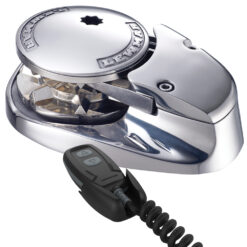
Lewmar V700 Vertical Windlass 12v + Remote
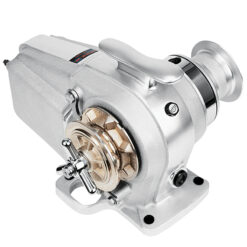
Lofrans Tigres 1500 12v Windlass

Lofrans Cayman Horizontal Windlass
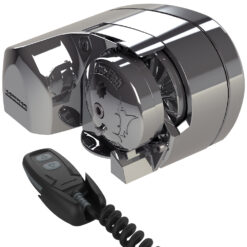
Lewmar Profish Windlass 1000 12v 8mm + Remote

Lofrans Tigres 10mm 24v Windlass
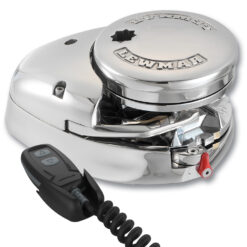
Lewmar V1 Windlass 8mm 12v + Remote

Lewmar VX2+ Gypsy Drum 8mm Gypsy 12V Extended Kit + Remote
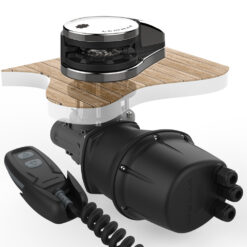
Lewmar VX2+ Gypsy 10mm ISO 12V 1000w + Remote
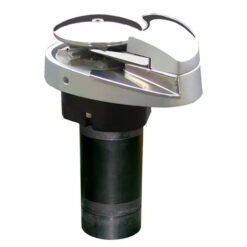
South Pacific Vertical Windlass
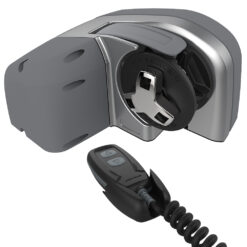
Lewmar HX1 Go 800 Windlass Kit 8mm + Remote

Lewmar VX1 Vertical Windlass 6/7mm 500w + Remote
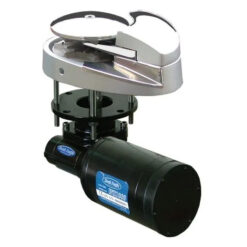
South Pacific 8mm 1100w Vertical Windlass
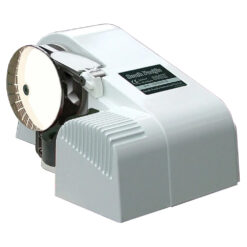
South Pacific Horizontal 8mm – 1100W Windlass
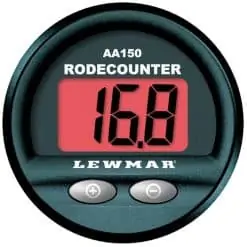
Lewmar Chain Counter AA150 Plug/Play
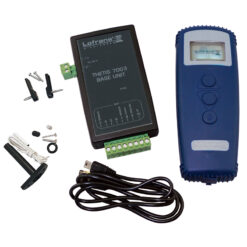
Lofrans Radio Control Chaincounter

Lofrans Handheld Remote Control Chaincounter Thetis 5003
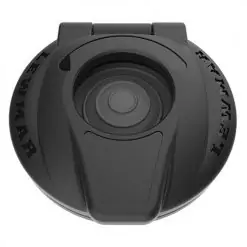
Lewmar CHSX Electric Deck Switch Open Lid

Lewmar Wired Windlass Remote Kit
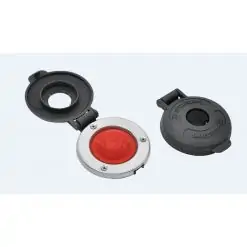
Lofrans Foot Switch

Lofrans Handheld Remote Control 1002

Quick Anchor Foot Switches
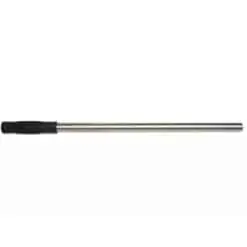
Lofrans Tigres Handle
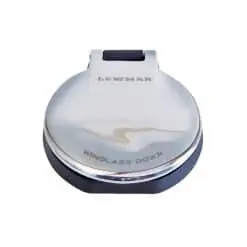
Lewmar Stainless Steel Footswitch Down

Lewmar Stainless Steel Footswitch
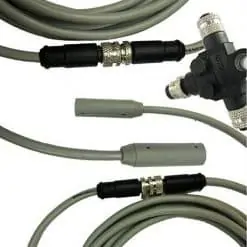
Lewmar AA Sensor Cable With Plugs 6.5m
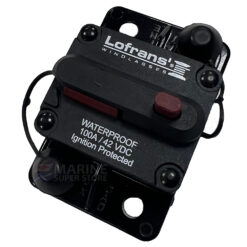
Lofrans Thermal Circuit Breaker
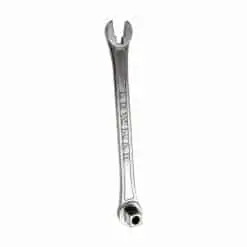
Lewmar Windlass Clutch Lever
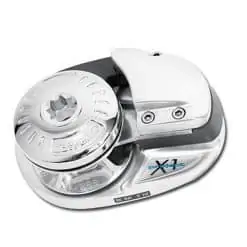
Lofrans X1 Vertical Windlass

Lofrans Kobra Windlass
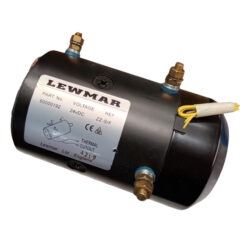
Lewmar 24v 2000w Motor Spare – 60000192SPA
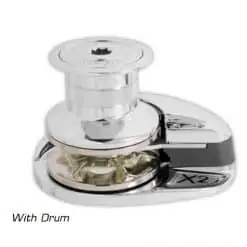
Lofrans X2 Windlass

Lewmar VX2+ Gypsy 8mm 12V 1000W + Remote

Lofrans Mini Remote Control 4 Buttons and Receiver

Lewmar CHSX Stainless Steel Closed Deck Switch
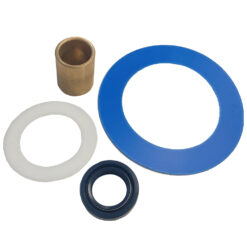
Lewmar V Service Kit
Username or email address *
Password *
Remember me Log in
Lost your password?
Email address *
A password will be sent to your email address.

Manual Anchor Windlass on a Boat: How to Operate and Maintain It
Manual anchor windlasses are an essential piece of equipment for boats of all sizes. They are used to retrieve the anchor quickly and efficiently, making it easier for boaters to navigate their vessels.
However, using a manual anchor windlass can be a challenging task, especially for those who are new to boating or have limited experience with this equipment.
Understanding how a manual anchor windlass works and its various components is crucial to using it correctly. There are different types of manual anchor windlasses available, each with its unique features and benefits.
Boaters must choose the right type of manual anchor windlass based on their boat size and use. Proper installation, regular maintenance, and following safety precautions are also essential to ensure the manual anchor windlass functions correctly.
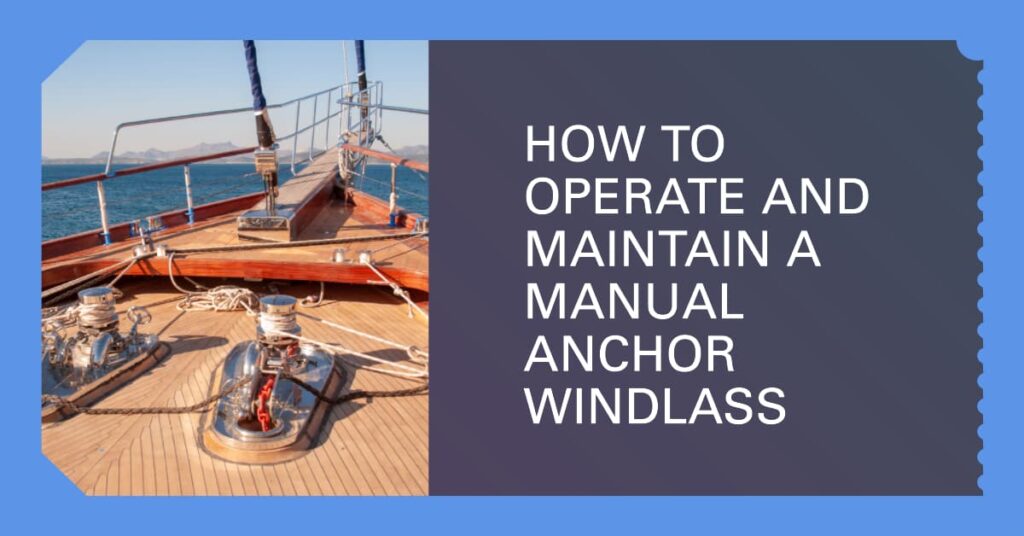
Key Takeaways
- Understanding the different types of manual anchor windlasses available is crucial to choosing the right one for your boat.
- Proper installation, regular maintenance, and following safety precautions are essential to ensure the manual anchor windlass functions correctly.
- Troubleshooting common problems and having knowledge of frequently asked questions can help boaters use their manual anchor windlass with confidence.
Understanding Anchor Windlass
An anchor windlass is a mechanical device used to lift or lower heavy objects, especially anchors on a boat. It is a crucial component of any vessel that requires anchoring. The windlass is located on the foredeck of the boat and can be either manual or motor-driven.
Types of Anchor Windlasses
There are two main types of anchor windlasses: horizontal and vertical. The choice between the two depends on the space available on the deck and in the anchor locker. The height of the fall is also an important consideration.
Horizontal windlasses are more common on smaller boats and are ideal for boats with limited deck space. They are designed to be mounted on the deck and require less space in the anchor locker. They are also easier to install and maintain.
Vertical windlasses, on the other hand, are more commonly found on larger boats. They are designed to be mounted below the deck and require more space in the anchor locker. They are also more powerful and can handle larger anchors and heavier chain.
Components of an Anchor Windlass
An anchor windlass consists of several components that work together to lift or lower the anchor. These include:
- Gypsy or Wildcat: This is the part of the windlass that grips the chain or rope and pulls it in or lets it out.
- Chain Wheel: This is the part of the windlass that the chain runs over. It is designed to prevent the chain from slipping off the gypsy.
- Motor or Handle: This is the part of the windlass that provides the power to lift or lower the anchor. It can be either a small electric motor or a manual handle.
- Brake: This is the part of the windlass that prevents the anchor from slipping out of control. It is essential for safety and should be checked regularly.
Using an Anchor Windlass
Using an anchor windlass is relatively straightforward. To lower the anchor, the operator needs to release the brake and let the chain or rope run out. To lift the anchor, the operator needs to engage the windlass and pull the chain or rope in.
It is essential to ensure that the anchor is securely fastened before using the windlass. The operator should also be familiar with the windlass’s operation and safety features to prevent accidents.
In conclusion, an anchor windlass is an essential component of any boat that requires anchoring. It is crucial to choose the right type of windlass and ensure that it is properly maintained to ensure safe and reliable operation.
Types of Manual Anchor Windlass
When it comes to manual anchor windlasses, there are two main types available in the market: vertical windlasses and horizontal windlasses. Each type has its own advantages and disadvantages, and the choice largely depends on the boat owner’s preference and usage.
Vertical Windlasses
Vertical windlasses are the most common type of manual windlass found on boats. They are designed to be mounted vertically on the deck and are operated by a handle that is attached to a shaft. The anchor rode is fed through a gypsy wheel and a chain stripper, which helps to prevent the chain from jamming.
One of the main advantages of vertical windlasses is that they are compact and take up less deck space compared to horizontal windlasses.
They are also easier to install, and the anchor rode is less likely to twist when being retrieved. However, vertical windlasses are generally slower than horizontal windlasses, and the handle can be difficult to operate when the anchor is stuck.
Horizontal Windlasses
Horizontal windlasses are less common than vertical windlasses but are gaining popularity among boat owners. They are designed to be mounted horizontally on the deck and are operated by a handle that is attached to a shaft. The anchor rode is fed through a chain gypsy and a rope drum.
One of the main advantages of horizontal windlasses is that they are faster than vertical windlasses and require less effort to operate. They are also better suited for boats with a high freeboard and can be used to retrieve the anchor from a wider range of angles.
However, horizontal windlasses are larger and take up more deck space than vertical windlasses. They are also more complex to install and maintain, and the anchor rode is more likely to twist when being retrieved.
In summary, the choice between a vertical and horizontal manual anchor windlass largely depends on the boat owner’s preferences and usage. Vertical windlasses are compact, easy to install, and less likely to twist the anchor rode, while horizontal windlasses are faster and better suited for boats with a high freeboard.
Components of a Manual Anchor Windlass
A manual anchor windlass is an essential piece of equipment on a boat or sailboat. It is used to raise or drop the anchor quickly, easily, and reliably. A manual windlass is powered by a crank or handle, which is rotated by the user to operate the windlass.
The gypsy is the part of the windlass that engages with the anchor chain . It is a wheel-shaped component that has teeth on its circumference. The teeth grip the chain and move it either up or down, depending on the direction of rotation of the windlass.
The gypsy is made of durable materials such as bronze, stainless steel, or aluminum to withstand the harsh marine environment.
The lever is the component that provides the user with mechanical advantage to operate the windlass. It is attached to the gypsy and is used to rotate the gypsy to raise or lower the anchor chain.
The lever can be a simple handle or a more complex lever system that provides additional mechanical advantage. The lever is made of materials such as steel or aluminum, which are strong enough to withstand the forces generated during operation.
The spool is the component that holds the anchor rode. The anchor rode is the combination of the anchor chain and the anchor line. The spool is usually located on the top of the windlass and is used to wrap the anchor rode around it.
The spool is made of materials such as steel or aluminum and is designed to withstand the forces generated during anchor retrieval.
In conclusion, a manual anchor windlass is a simple yet essential piece of equipment on a boat or sailboat. It consists of three main components: the gypsy, the lever, and the spool. The gypsy engages with the anchor chain, the lever provides a mechanical advantage, and the spool holds the anchor rode. With these components, a manual anchor windlass provides reliable and efficient anchor retrieval.
Working of a Manual Anchor Windlass
A manual anchor windlass is a mechanical device that is used to raise and lower the anchor on a boat. It is operated by hand, using a crank or handle, and is typically located on the foredeck of the boat. The manual windlass is a simple and reliable piece of equipment that has been used for centuries by sailors around the world.
The basic operation of a manual anchor windlass is relatively straightforward. The windlass consists of a drum or wheel that is attached to a shaft. The anchor chain is wrapped around the drum, and the shaft is turned by the operator using the crank or handle. As the shaft turns, the chain is pulled in or let out, raising or lowering the anchor as needed.
One of the key advantages of a manual anchor windlass is its simplicity. Unlike electric windlasses, which require complex electrical systems and wiring, a manual windlass can be operated with nothing more than a strong arm and a little elbow grease. This makes it an ideal choice for boats that do not have a lot of electrical power or that are used in remote locations where electricity is not readily available.
Another advantage of a manual anchor windlass is its durability. Because it is a mechanical device, it is less prone to the types of failures that can occur with electrical systems. This means that it is less likely to break down or malfunction, which can be a major problem when you are out on the water.
Overall, a manual anchor windlass is a simple and reliable piece of equipment that can be a valuable addition to any boat. Whether you are a seasoned sailor or a novice boater, a manual windlass can help make your boating experience safer and more enjoyable.
Installation Process
Installing a manual anchor windlass on a boat can be a challenging task, but with the right tools and instructions, it can be done in a few hours. This section will provide a step-by-step guide on how to install a manual anchor windlass on a boat.
Choosing the Right Location
The first step in the installation process is to choose the right location for the windlass. The location should be close to the bow of the boat and should have enough space for the windlass and the anchor chain. It is also important to choose a location that is easily accessible and does not interfere with other equipment on the boat.
Mounting the Windlass
Once the location has been chosen, the next step is to mount the windlass. The windlass should be mounted securely to the deck using bolts and washers. It is important to ensure that the windlass is mounted level and that the bolts are tightened to the manufacturer’s specifications.
Securing the Windlass
After the windlass has been mounted, the next step is to secure it. This involves connecting the anchor chain to the windlass and securing it with the chain stopper. It is important to ensure that the chain is properly aligned with the windlass and that the chain stopper is securely fastened.
In summary, installing a manual anchor windlass on a boat requires choosing the right location, mounting the windlass securely to the deck, and securing the windlass to the anchor chain. With the right tools and instructions, this can be done in a few hours, providing a reliable and efficient way to anchor a boat.
Maintenance Tips
Regular cleaning.
To keep the manual anchor windlass on a boat functioning properly, it is important to clean it regularly. The windlass should be rinsed with fresh water after each use to remove salt, sand, and mud. It is also recommended to rinse the rode before it enters the anchor locker to prevent debris from spattering onto the winch components.
Polished, chromed, or painted parts should be cleaned with a mild detergent and can be waxed and polished for added protection . Nylon anchor rodes have excellent stretch characteristics for load and shock absorption, but they tend to shrink around the first link of chain. Therefore, it is important to check the rope/chain splice regularly.
Lubrication
Lubricating the moving parts of the windlass is crucial for proper function and longevity. The chainwheel and clutch cone system should be disassembled, and all moving parts and fasteners should be lubricated with lithium grease. The surfaces of the two clutch cones and the chainwheel where they meet should be cleaned and greased thoroughly.
Inspection for Damage
Regular inspection for damage is essential to ensure the safety and proper operation of the windlass. The windlass should be tested for proper alignment by deploying and retrieving the anchor a minimum of 10 times using a minimum of 50 feet of rode. If a jam occurs during this test sequence, a close investigation is warranted.
It is also important to inspect the windlass for any signs of damage, such as cracks, corrosion, or wear. Any damaged parts should be replaced immediately to prevent further damage or failure of the windlass.
In summary, regular cleaning, lubrication, and inspection for damage are crucial for the proper function and longevity of a manual anchor windlass on a boat. By following these maintenance tips, boat owners can ensure the safety and reliability of their windlass.
Troubleshooting Common Problems
Stuck anchor.
One of the most common problems with a manual anchor windlass is a stuck anchor. If the anchor is stuck, it can be difficult to raise it up to the deck of the boat. This can be caused by a number of different issues, including debris that has become lodged in the anchor, a damaged or worn-out pawl, or a malfunctioning brake.
To troubleshoot a stuck anchor, start by checking the pawl and the brake. If either of these components is damaged, it may need to be replaced. Additionally, check the anchor for any debris that may be causing it to become stuck. If there is debris, try to remove it with a long pole or a hook.
Loose Lever
Another common problem with a manual anchor windlass is a loose lever. If the lever is loose, it can be difficult to raise and lower the anchor. This can be caused by a number of different issues, including a damaged or worn-out lever, a malfunctioning pawl, or a loose or damaged pin.
To troubleshoot a loose lever, start by checking the lever itself. If it is damaged or worn-out, it may need to be replaced. Additionally, check the pawl and the pin for any damage or wear. If either of these components is damaged, it may need to be replaced as well.
It is important to regularly inspect and maintain a manual anchor windlass to prevent these common problems from occurring. Regular lubrication, cleaning, and inspection can help keep the windlass in good working order.
Safety Precautions
When using a manual anchor windlass on a boat, it is important to take certain safety precautions to avoid accidents and injuries. Here are some safety tips to keep in mind:
Wear Protective Gear
Before operating the manual windlass, make sure to wear protective gear such as gloves and safety glasses. This will protect your hands from getting pinched or cut and your eyes from flying debris.
Secure the Boat
Ensure that the boat is securely anchored before using the windlass. This will prevent the boat from drifting away while you are pulling up the anchor.
Use Proper Technique
Use proper technique when operating the windlass. Do not use your back to pull the anchor up, as this can cause strain and injury. Instead, use your legs and keep your back straight.
Watch Out for Obstructions
Be aware of any obstructions around the windlass, such as ropes or cables, and make sure to clear them away before operating the windlass.
Maintain the Windlass
Regularly maintain and inspect the windlass to ensure that it is in good working condition. Replace any worn or damaged parts immediately to prevent accidents.
By following these safety precautions, you can ensure that you operate the manual anchor windlass on your boat safely and efficiently.
Frequently Asked Questions
How do i properly maintain a manual anchor windlass on my boat.
Proper maintenance of a manual anchor windlass is crucial for its longevity and performance. It is important to regularly clean and lubricate the windlass to prevent rust and corrosion. Additionally, inspect the gears and pawls for wear and tear, and replace them if necessary. It is also recommended to periodically check the anchor rode for any signs of fraying or damage.
What are the advantages of using a manual anchor windlass on a boat?
A manual anchor windlass is a cost-effective and reliable option for boaters who do not want to rely on electricity or hydraulics. It allows for easy and precise control over the anchor, making it easier to set and retrieve. Additionally, it can be used as a backup in case of power failure or other mechanical issues.
What are some safety considerations when using a manual anchor windlass on a boat?
When using a manual anchor windlass, it is important to always wear gloves to prevent rope burns and to use proper lifting techniques to prevent back strain. Additionally, be cautious of entanglement hazards and ensure that the anchor rode is properly secured to the windlass.
What is the average cost of a manual anchor windlass for a boat?
The cost of a manual anchor windlass can vary depending on the size and type of boat. On average, a basic manual windlass can cost anywhere from $200 to $500, while more advanced models can cost upwards of $1,000.
What are some common issues that can arise when using a manual anchor windlass on a boat?
Common issues with manual anchor windlasses can include jamming, slipping, and wear and tear on the gears and pawls. It is important to regularly inspect and maintain the windlass to prevent these issues.
Are there any specific techniques for using a manual anchor windlass on a boat?
To properly use a manual anchor windlass, it is important to ensure that the anchor rode is properly secured to the windlass and that the windlass is properly lubricated. Additionally, use a slow and steady pace when setting or retrieving the anchor to prevent damage to the windlass or anchor rode.
About the author
I worked as an officer in the deck department on various types of vessels, including oil and chemical tankers, LPG carriers, and even reefer and TSHD in the early years. Currently employed as Marine Surveyor carrying cargo, draft, bunker, and warranty survey.
Leave a Reply Cancel reply
Your email address will not be published. Required fields are marked *
Save my name, email, and website in this browser for the next time I comment.
Latest posts

Fiberglass vs. Steel: Which Is More Reliable?
Shipping professionals should get the most from their investment, so which is more reliable: steel vs. fiberglass? Here’s how to determine the better option.

What Does a Longshoreman Do?
Longshoremen play a critical role in the global supply chain, bringing billions worth of cargo into the country. So what does a longshoreman do exactly?

The Ocean Warming Effects on Marine Life
The last few decades have seen ocean temperatures rise as climate change begins to affect maritime industries worldwide. Here are the ocean warming effects on marine life seen so far.

- Choose Your New Windlass
- Mega Yacht Solutions
The ULTIMATE ANCHORING SOLUTION for MEGA YACHTS
Main Features:
- Fully customised for all parts to fit your needs - Independent operation of gypsy and capstan - High torque planetary gearbox - 42mm stud-link chain 12.000kgs max. pull - AC or HYD high torque latest generation motors for all marine conditions
The ZEUS series is made up by the following models: ZEUS 5500, ZEUS 7500, ZEUS 9500 and ZEUS 12000
ZEUS Range 5500kg up to 12000kg

- Vertical Windlasses
- Horizontal Windlasses
- Multifunctional winches

Newsletter for recieve
Our latest company updates.
- Bahasa Indonesia
- Slovenščina
- Science & Tech
- Russian Kitchen
Cruising the Moskva River: A short guide to boat trips in Russia’s capital

There’s hardly a better way to absorb Moscow’s atmosphere than on a ship sailing up and down the Moskva River. While complicated ticketing, loud music and chilling winds might dampen the anticipated fun, this checklist will help you to enjoy the scenic views and not fall into common tourist traps.
How to find the right boat?
There are plenty of boats and selecting the right one might be challenging. The size of the boat should be your main criteria.
Plenty of small boats cruise the Moskva River, and the most vivid one is this yellow Lay’s-branded boat. Everyone who has ever visited Moscow probably has seen it.

This option might leave a passenger disembarking partially deaf as the merciless Russian pop music blasts onboard. A free spirit, however, will find partying on such a vessel to be an unforgettable and authentic experience that’s almost a metaphor for life in modern Russia: too loud, and sometimes too welcoming. Tickets start at $13 (800 rubles) per person.
Bigger boats offer smoother sailing and tend to attract foreign visitors because of their distinct Soviet aura. Indeed, many of the older vessels must have seen better days. They are still afloat, however, and getting aboard is a unique ‘cultural’ experience. Sometimes the crew might offer lunch or dinner to passengers, but this option must be purchased with the ticket. Here is one such option offering dinner for $24 (1,490 rubles).

If you want to travel in style, consider Flotilla Radisson. These large, modern vessels are quite posh, with a cozy restaurant and an attentive crew at your service. Even though the selection of wines and food is modest, these vessels are still much better than other boats.

Surprisingly, the luxurious boats are priced rather modestly, and a single ticket goes for $17-$32 (1,100-2,000 rubles); also expect a reasonable restaurant bill on top.
How to buy tickets?
Women holding photos of ships promise huge discounts to “the young and beautiful,” and give personal invitations for river tours. They sound and look nice, but there’s a small catch: their ticket prices are usually more than those purchased online.
“We bought tickets from street hawkers for 900 rubles each, only to later discover that the other passengers bought their tickets twice as cheap!” wrote (in Russian) a disappointed Rostislav on a travel company website.
Nevertheless, buying from street hawkers has one considerable advantage: they personally escort you to the vessel so that you don’t waste time looking for the boat on your own.

Prices start at $13 (800 rubles) for one ride, and for an additional $6.5 (400 rubles) you can purchase an unlimited number of tours on the same boat on any given day.
Flotilla Radisson has official ticket offices at Gorky Park and Hotel Ukraine, but they’re often sold out.
Buying online is an option that might save some cash. Websites such as this offer considerable discounts for tickets sold online. On a busy Friday night an online purchase might be the only chance to get a ticket on a Flotilla Radisson boat.
This website (in Russian) offers multiple options for short river cruises in and around the city center, including offbeat options such as ‘disco cruises’ and ‘children cruises.’ This other website sells tickets online, but doesn’t have an English version. The interface is intuitive, however.
Buying tickets online has its bad points, however. The most common is confusing which pier you should go to and missing your river tour.

“I once bought tickets online to save with the discount that the website offered,” said Igor Shvarkin from Moscow. “The pier was initially marked as ‘Park Kultury,’ but when I arrived it wasn’t easy to find my boat because there were too many there. My guests had to walk a considerable distance before I finally found the vessel that accepted my tickets purchased online,” said the man.
There are two main boarding piers in the city center: Hotel Ukraine and Park Kultury . Always take note of your particular berth when buying tickets online.
Where to sit onboard?
Even on a warm day, the headwind might be chilly for passengers on deck. Make sure you have warm clothes, or that the crew has blankets ready upon request.
The glass-encased hold makes the tour much more comfortable, but not at the expense of having an enjoyable experience.

Getting off the boat requires preparation as well. Ideally, you should be able to disembark on any pier along the way. In reality, passengers never know where the boat’s captain will make the next stop. Street hawkers often tell passengers in advance where they’ll be able to disembark. If you buy tickets online then you’ll have to research it yourself.
There’s a chance that the captain won’t make any stops at all and will take you back to where the tour began, which is the case with Flotilla Radisson. The safest option is to automatically expect that you’ll return to the pier where you started.
If using any of Russia Beyond's content, partly or in full, always provide an active hyperlink to the original material.
to our newsletter!
Get the week's best stories straight to your inbox
- What to do in Moscow City, if you’re not mega-rich
- Moscow after dusk: 10 places to drink, dance, and groove
- 5 things you must do in Moscow in 2018 between football matches (or without them)
- Sandwiched between Moscow and St. Petersburg: How to spend a perfect weekend in Tver
- 24 or 48 hours in Moscow: Where to go and what to do in 2019
This website uses cookies. Click here to find out more.

IMAGES
VIDEO
COMMENTS
That is, a 33' boat with a 22lb. Delta anchor, 200' of 1/2" rope with 15' of 1/4" chain and a shackle (about 40lb.), with a total ground tackle weight of 62lb., would select a windlass with at least 248lb. of pull (62lb. of ground tackle, times four). If ground tackle is too heavy or close to the windlass's maximum pulling power, or if the ...
Anchor Windlasses. Windlasses, also commonly called winches, are a key element of every boat's anchoring system. These devices are engineered to restrain and manage anchor chains so that they can be lowered or hoisted from the water. Notches located in the anchor windlasses' gear wheel engage the links of the chain or anchor roping.
5. Pactrade PDSA0317 Electric Anchor Windlass. This, to me, is a budget-friendly windlass anchor winch for those who like to do solo fishing on a pontoon or any other similar small vessel. It's made of marine-grade materials, can handle anchors weighing no more than 20 pounds, and is reliable on the whole.
Here are some key considerations when choosing a windlass anchor system: Boat Size and Weight: The windlass capacity should be at least three times the combined weight of your anchor and anchor rode. Durability and Reliability: Marine-grade windlasses should be built to withstand harsh conditions and a lot of use. Fisheries Supply: Your One ...
Windlass Definition. A mechanical device called a boat windlass is used to control an anchor chain. It normally comprises of a vertical spindle or "wildcat" attached to the drum, a horizontal drum or "gypsy" mounted on the boat's deck, and a motor that propels the spindle. The anchor and its chain are stowed on the drum when not in use and are ...
Sizing Considerations: The anchor windlass is intended to retrieve the anchor and ground tackle, not to pull or drag the boat. A typical rule of thumb is to take the total weight of the anchor and ground tackle and multiply by a factor of three. (for example a boat with a 22lb anchor and 40lbs of anchor rode and hardware would select a windlass ...
windlasses & rollers. anchor windlasses. CONTACT WEST MARINE. Live Chat. 1-800-262-8464. Store Locator. Shop the best selection of Anchor Windlasses from West Marine. Visit for products, prices, deals and more!
Lofrans' anchor windlass. Lofrans' founded in Monza/Italy in1966 and since then has been dedicated to designing and manufacturing windlasses and anchor management solutions that combine top performance, absolute safety and style. For many decades Lofrans' enriches the market with innovative solutions, such as the Automatic Free Fall and the ...
Windlasses. Electric Windlasses for anchoring are standard equipment for most new sailing yachts and motorboats. Upgrades on older yachts are increasingly popular with the advent of improved DC electric charging systems and the tendency towards longer lengths of anchor chain. The Jimmy Green Team can advise you on all the options regarding your ...
A windlass allows you to retrieve the anchor much more quickly, without becoming exhausted, or sick, in the process. Whether manual or motor driven, windlasses make anchor retrieval much easier. Boat size and use are the primary factors in determining which type of windlass you will need. However, there is a windlass for every anchor and rode type.
Browse Windlasses. There are a number of important criteria to be considered in selecting the correct windlass for your boat. These include the vessel length and beam, displacement, windage (the vessel's topside surface exposed to the wind), anchor size, and rode selection. Practicalities such as locker space and depth of fall for the rode ...
Anchor = 60 pounds. Total weight = 210 pounds. Factor x 3 = 630 pounds. In this example, be certain the max pull of the windlass exceeds 630 pounds, and you'll have power to spare. Example 2: 20 feet x 3/8ths-inch chain = 30 pounds. 180 feet x 5/8ths-inch 3-strand rope = 40 pounds. Anchor = 60 pounds. Total weight = 130 pounds.
Lewmar Windlasses. At Lewmar, we think about what makes boaters' lives easier, and bring those ideas to life in our products. ... Anchor Accessories (1) Windlass Range. Pro (Series/Fish) Horizontal Windlass (10) V-Series Vertical Windlass (44) ... Boat length. 101+ ft (26) 31-50ft (48) 51-70ft (35) 71-100ft (28) up to 30ft (47) View Details ...
Raising an anchor by hand can be a real workout. Whether you own a fishing boat, power cruiser or sailboat, a windlass makes boating easier on your back. Windlasses can be DIY-installed by a boat owner with intermediate mechanical and electrical skills. We'll walk you through installing one on your boat. Anchor Rollers and Alignment
4. Maxwell RC8 12V Windlass - 1000W 5/16 Chain to 5/8 Rope. Next on our list of best windlass anchor system is the Maxwell RC8 12V Windlass - 1000W 5/16 Chain to 5/8 Rope. Click here to see it on Amazon. The Maxwell RC8 has most of the Maxwell RC6, but it is for bigger boats.
There are two main types of anchor windlasses, which can be selected according to your boat's needs and properties. One type is the Vertical Windlass which features a vertical rotation in relation to the deck which allows a reduced volume above deck as the electric motor and the gear box are sitting in the chain locker.
Lewmar VX1 Vertical Windlass 6/7mm 500w + Remote. £ 1,116.47 £ 849.95. South Pacific 8mm 1100w Vertical Windlass. £ 799.95 £ 669.95. South Pacific Horizontal 8mm - 1100W Windlass. £ 799.95 £ 629.99. Lewmar Chain Counter AA150 Plug/Play. £ 349.95. Lofrans Radio Control Chaincounter.
It is operated by hand, using a crank or handle, and is typically located on the foredeck of the boat. The manual windlass is a simple and reliable piece of equipment that has been used for centuries by sailors around the world. The basic operation of a manual anchor windlass is relatively straightforward.
Windlasses. Mega Yacht Solutions. The ULTIMATE ANCHORING SOLUTION for MEGA YACHTS. Main Features: - Fully customised for all parts to fit your needs. - Independent operation of gypsy and capstan. - High torque planetary gearbox. - 42mm stud-link chain 12.000kgs max. pull. - AC or HYD high torque latest generation motors for all marine conditions.
Surprisingly, the luxurious boats are priced rather modestly, and a single ticket goes for $17-$32 (1,100-2,000 rubles); also expect a reasonable restaurant bill on top.
Go on a sightseeing Moscow boat cruise. A masterfully compiled program heightens everyone's interests and amuses our passengers. There is also an audio guide available. Radisson Moscow boat rides. A splendid restaurant with a panoramic deck will be comfortable any time of the year. In addition, for the history lovers, there is a free audio guide.
On this map you can see the details of the longest and most classic of the Flotilla Radisson boat tours: 2. Companies that do boat tours on the Moskva River. There are many companies that do cruises on the Moskva River, but the 4 main ones are: Capital River Boat Tour Company (CCK) Mosflot. Flotilla Radisson.
Moscow River Boat Tour with a Private Guide. Duration: 3 hours. Enjoy breathtaking views of Moscow from the Moskva River. Along with your personal guide explore the most picturesque sights of Russia's capital such as Cathedral of Christ the Saviour, St.Basil Cathedral, Stalin's Skyscrappers and much more. Hotel Pickup and.